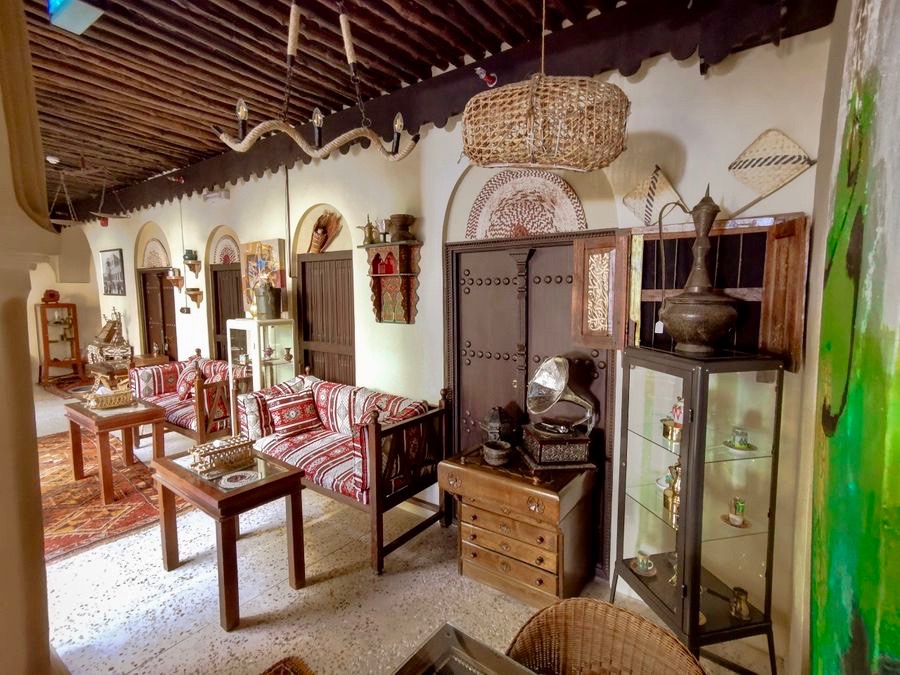Saudi Arabia is located on the Arabian Peninsula in southwest Asia. It shares land borders with Iraq, Jordan, Kuwait, Oman, Qatar, the United Arab Emirates, and Yemen; and maritime borders with Bahrain, Egypt, Eritrea, Iran, and Sudan. Its geography is dominated by Rub’ al Khali (also known as the Empty Quarter), the world’s largest continuous sand desert.
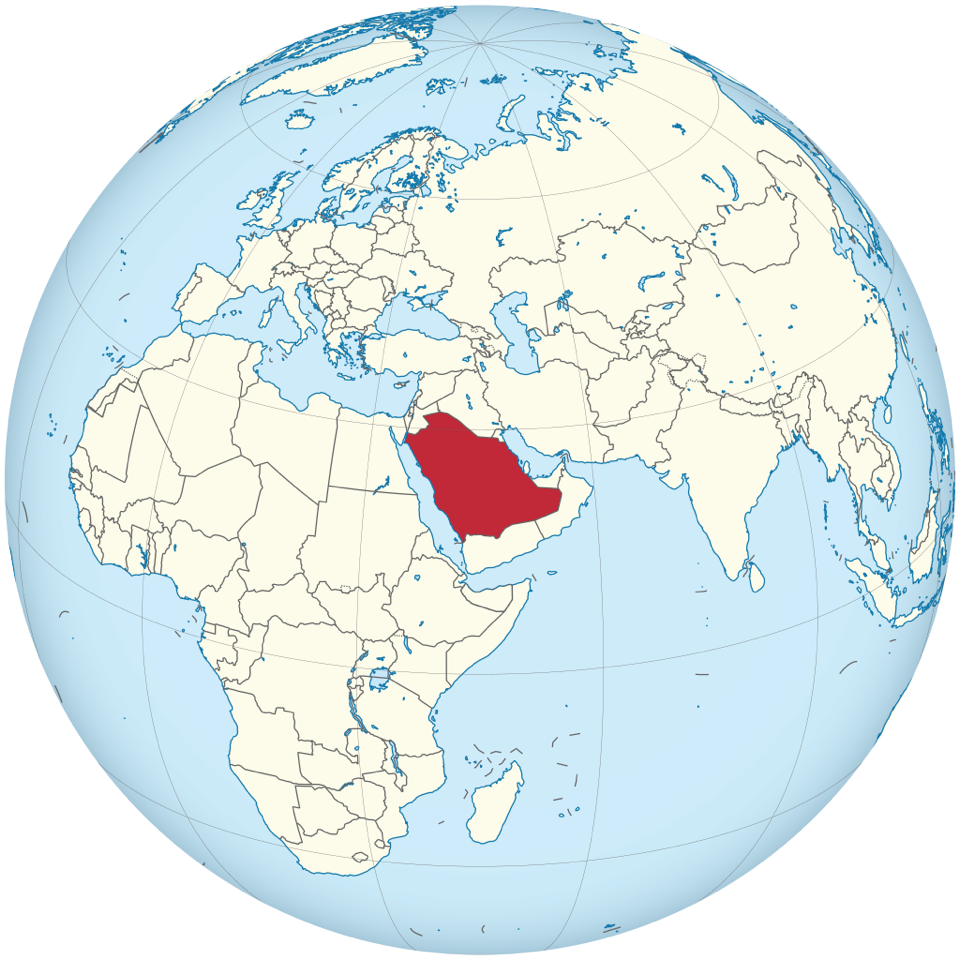
On a geological timescale, the Arabian Peninsula is young. It separated from the main African continent approximately 25 million years ago, creating the Red Sea. It is no surprise that Saudi Arabia’s desert has much in common with the Sahara. Indeed, the sands have the same orange coloration due to the presence of iron oxides.
I explored the Kingdom for three months last year with the purpose of writing about and photographing its natural beauty, history, and splendor. It was a rich and beguiling experience. Saudi Arabia is complicated, but fascinating and intriguing with its unique and special architecture, traditions, landscapes, and people. It is at once everything you have heard it to be and absolutely nothing like you have heard it to be.
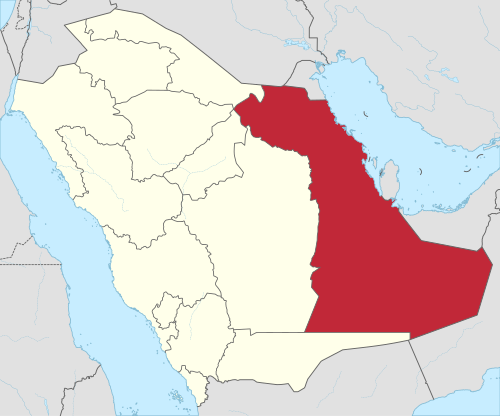
I spent some of my time staying on the beach in Al Aziziya in the Gulf.
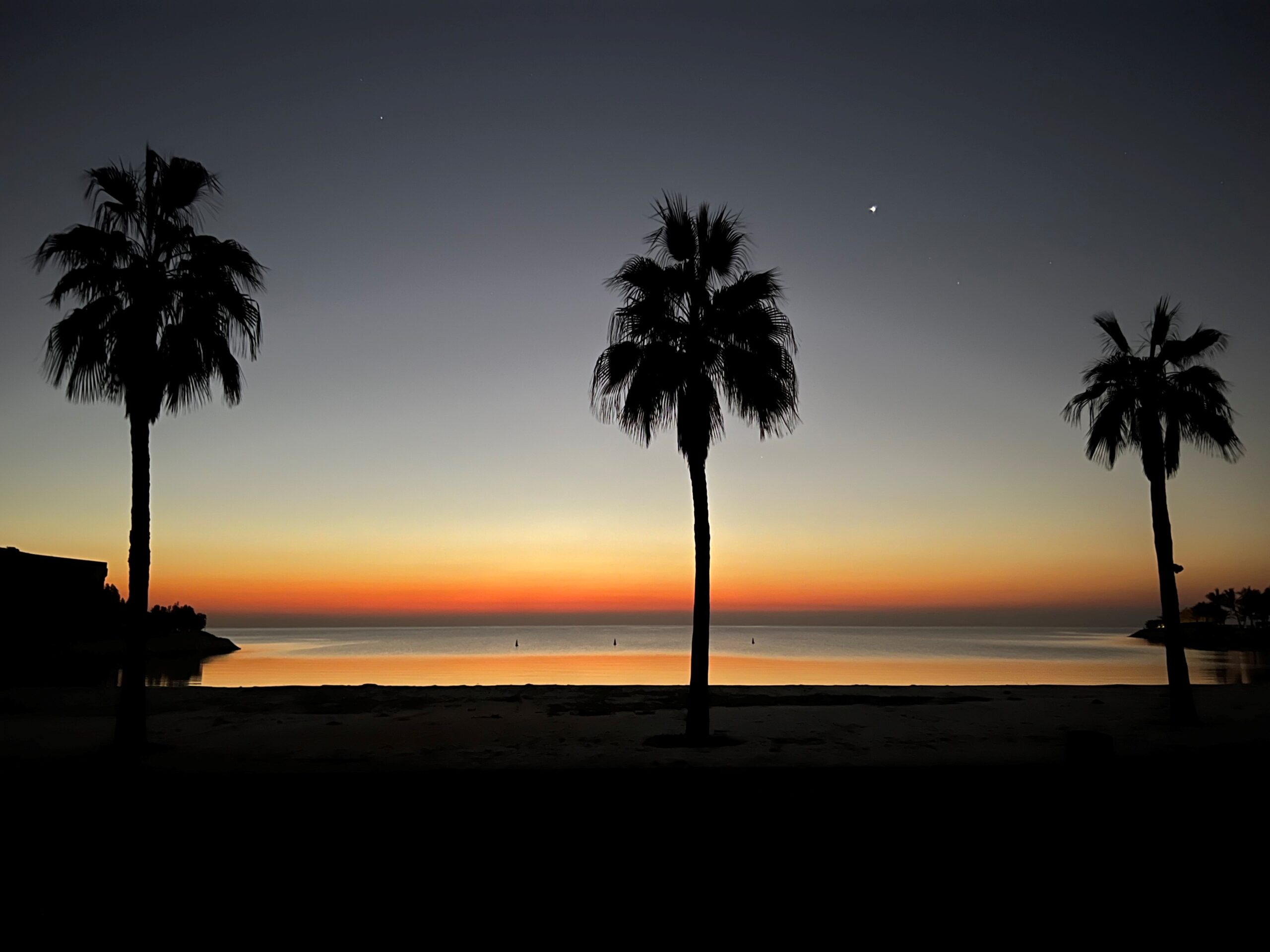
Early morning is my favorite time. Watching the sun rise over the waters of the Gulf was never disappointing.
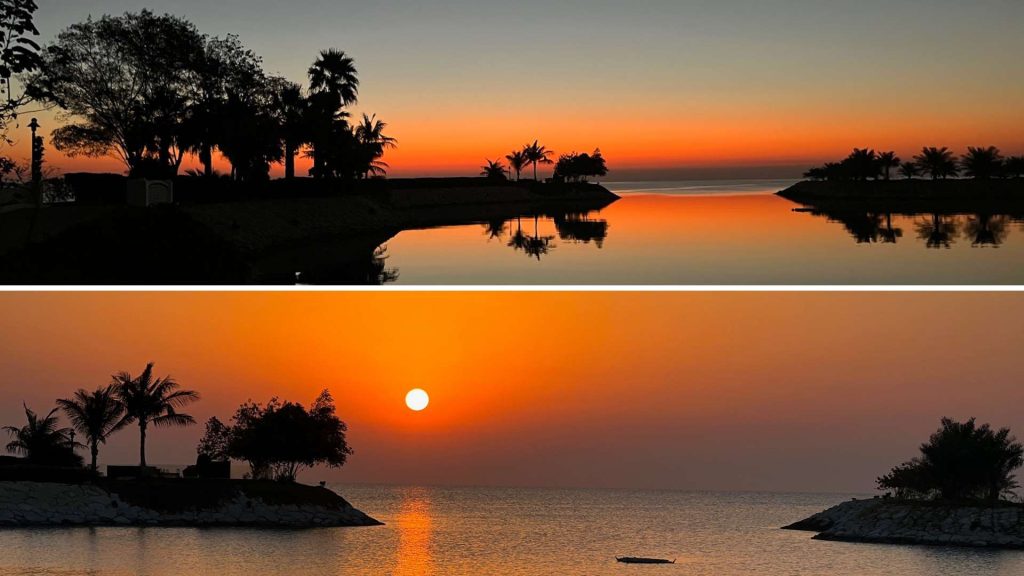
My friend Ahmed Almubarak and I went on a road trip to visit his family and explore Al-Ahsa.

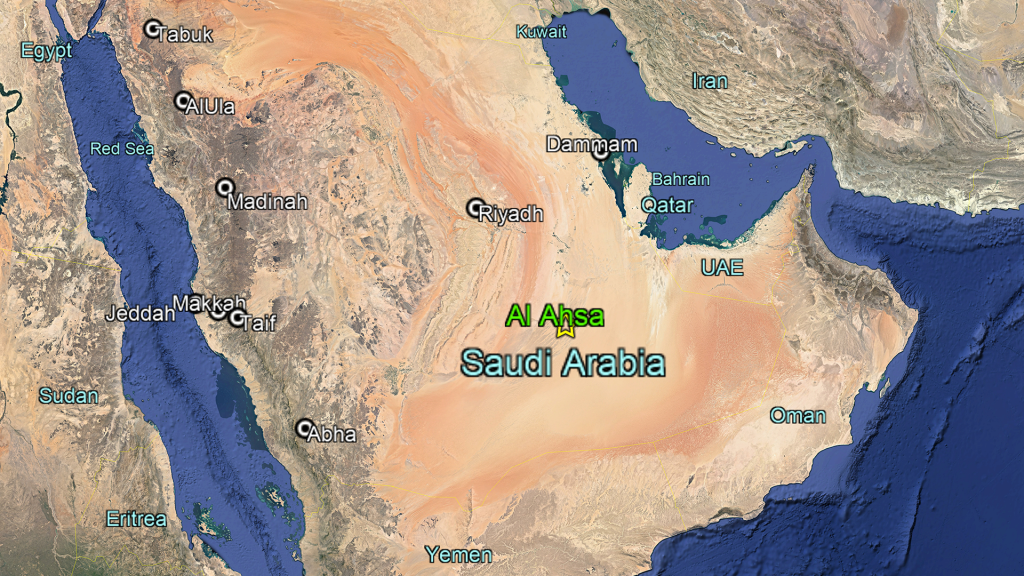
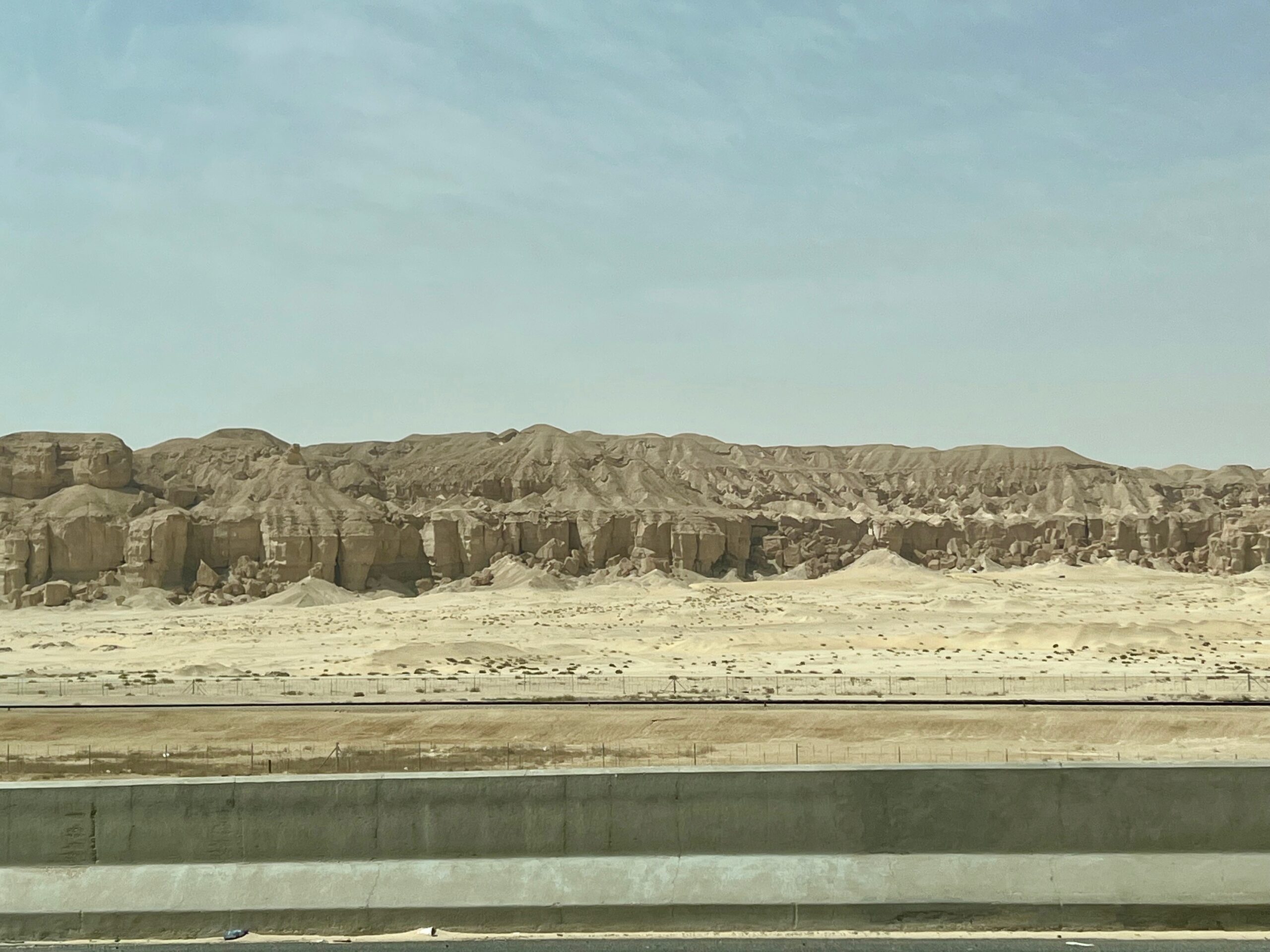
Al-Ahsa is the largest self-contained oasis in the world. It includes many national heritage sites and some of the oldest known human settlements dating back thousands of years. Its date-palm oasis is the largest palm oasis surrounded by sand in the world.
For millennia, this region’s fertile land made it a hub for traders and caravans traversing ancient trade routes, forging links across the Arabian Peninsula and beyond, and providing a stopping place for early pilgrims on route to Makkah.
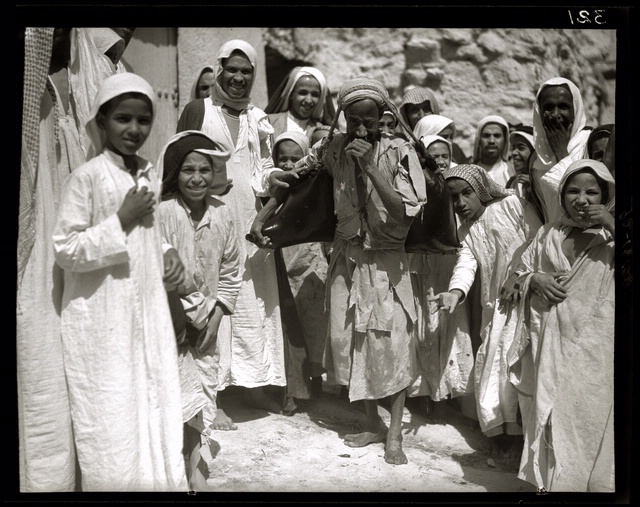
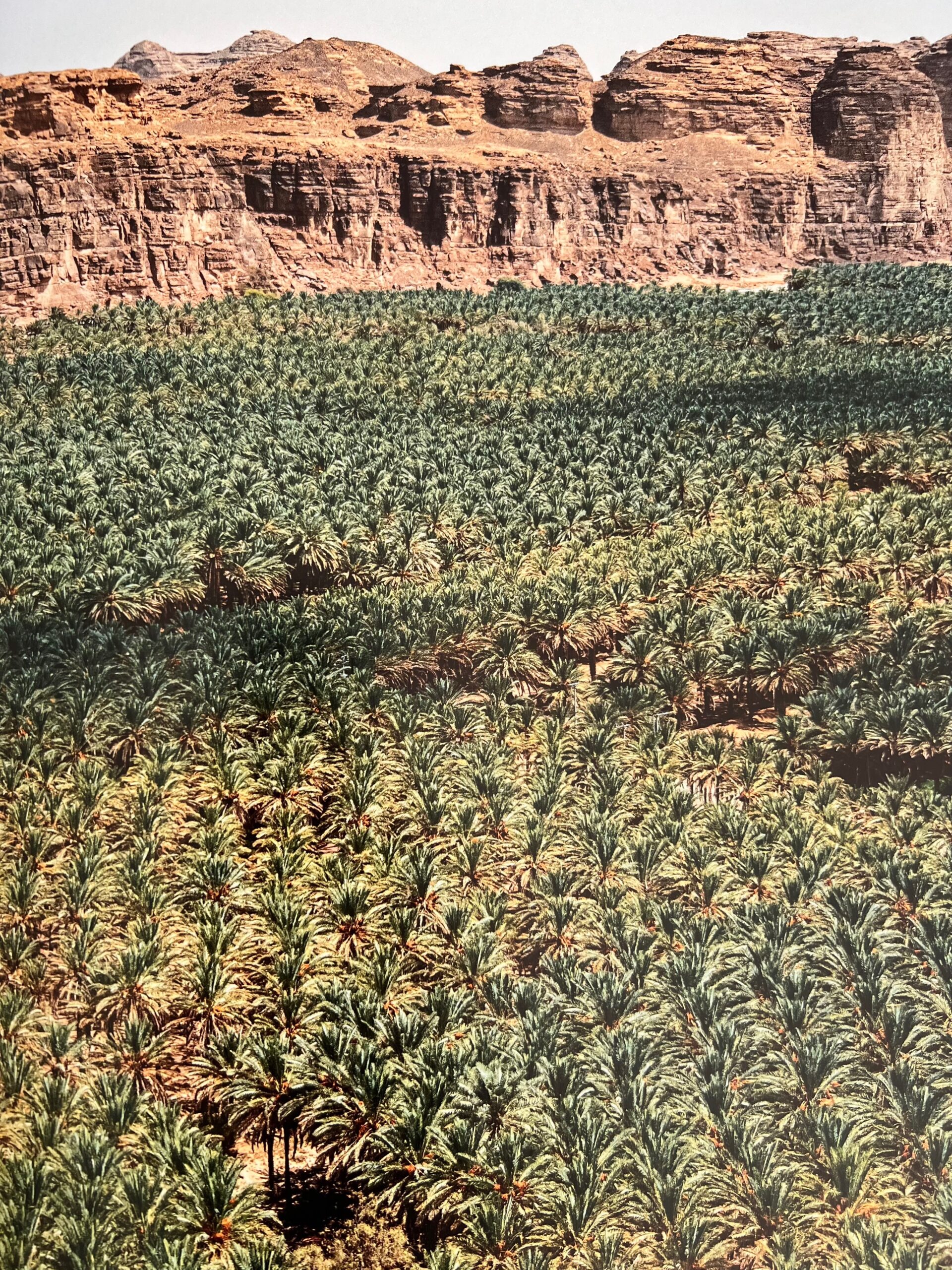
The Al-Ahsa Oasis contains a mix of shady palm groves and crystal-clear springs among urban areas and archaeological sites. It stands as a welcoming haven against the harsh and untamed plains of the Rub’ al Khali. The Empty Quarter is the largest area of continuous sand in the world. It is a sand sea or “erg.” The sand desert encompasses most of the southern third of the Arabian Peninsula.
The oasis is named after the Al-Ahsa region in which it lies. It occupies approximately 33 square miles (85 square kilometers) irrigated by more than 280 artesian springs. The Al-Ahsa Oasis was inscribed on the UNESCO World Heritage List under the Cultural Heritage category. Its palms, their fruits, and the reservoirs of crystalline fresh water beneath the oasis are the reasons that Al-Ahsa housed civilizations that pre-dated Islam, with archaeological evidence of some of the oldest settlements in the Arabian Peninsula dating as far back as 5,000 BC.
I was especially curious about the ancient town of Hofuf in the oasis. It is mentioned in the Bible.


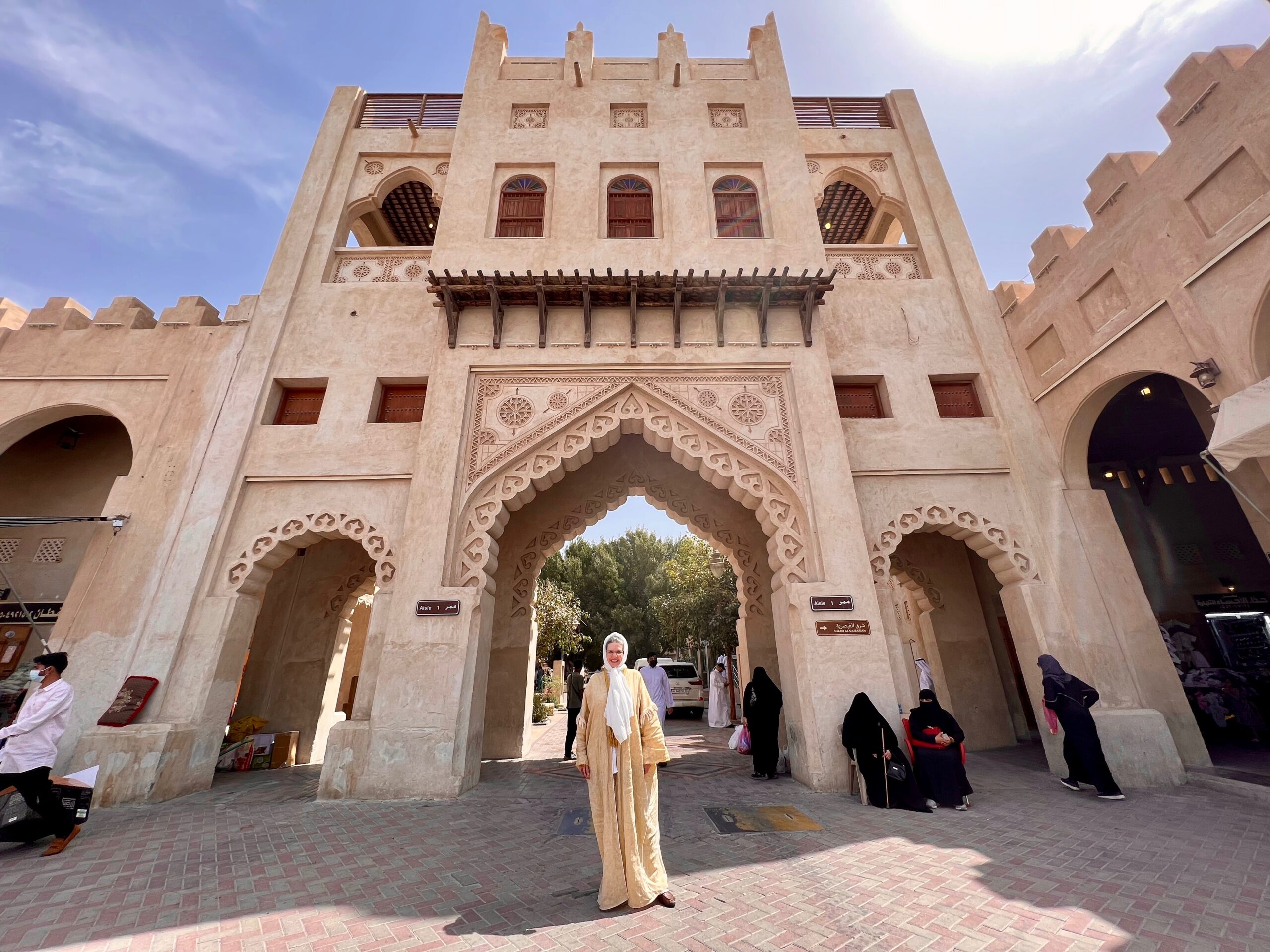
The market is one of the tourist attractions in Hofuf, where visitors from various Arab and foreign countries, including the Arab Gulf states, flock to. It consists of rows of shops located in closed and roofed corridors with construction resembling an Ottoman style.

In 2001, a fire broke out in the market and caused significant damage. It fully re-opened in 2013.
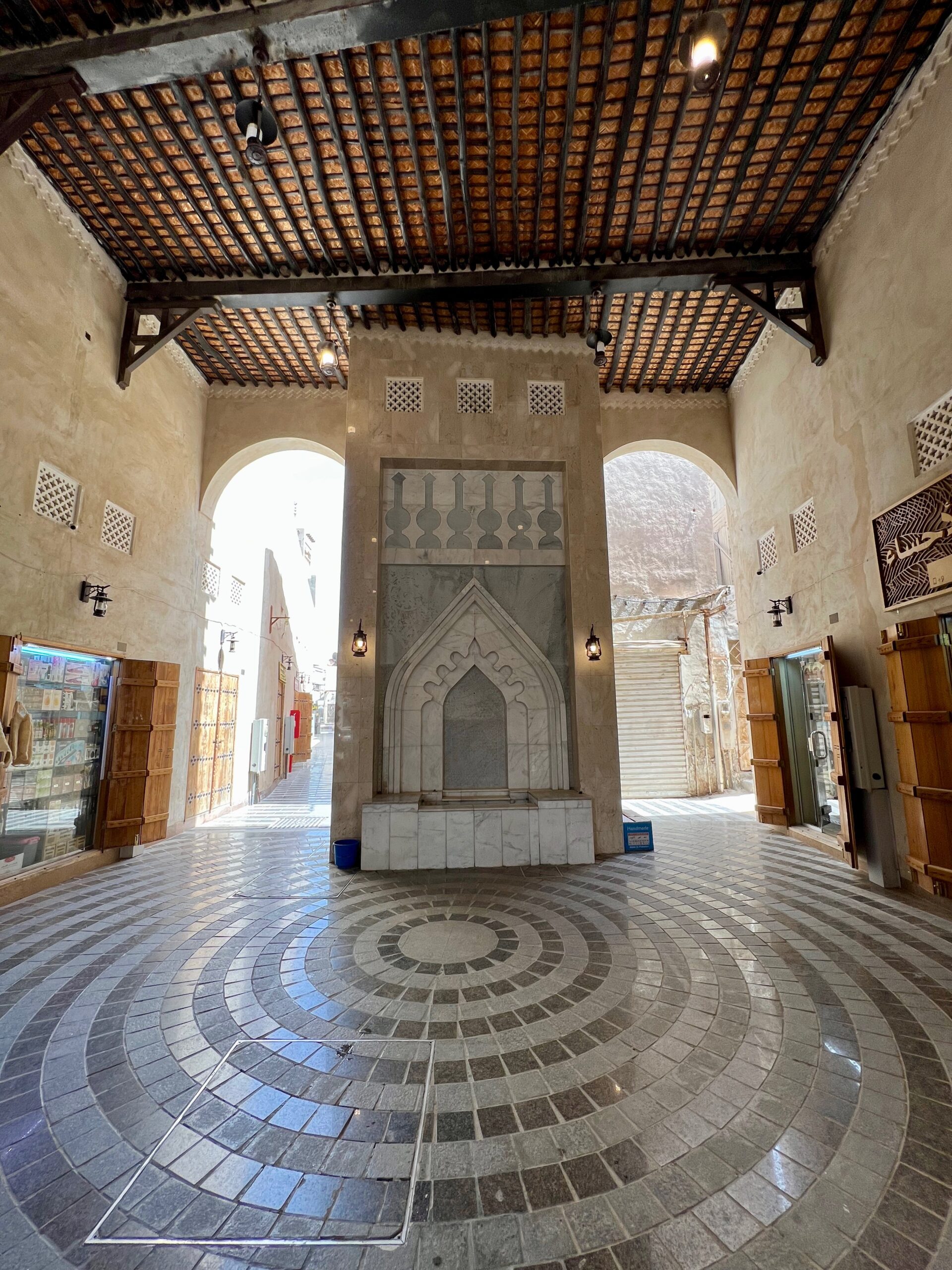
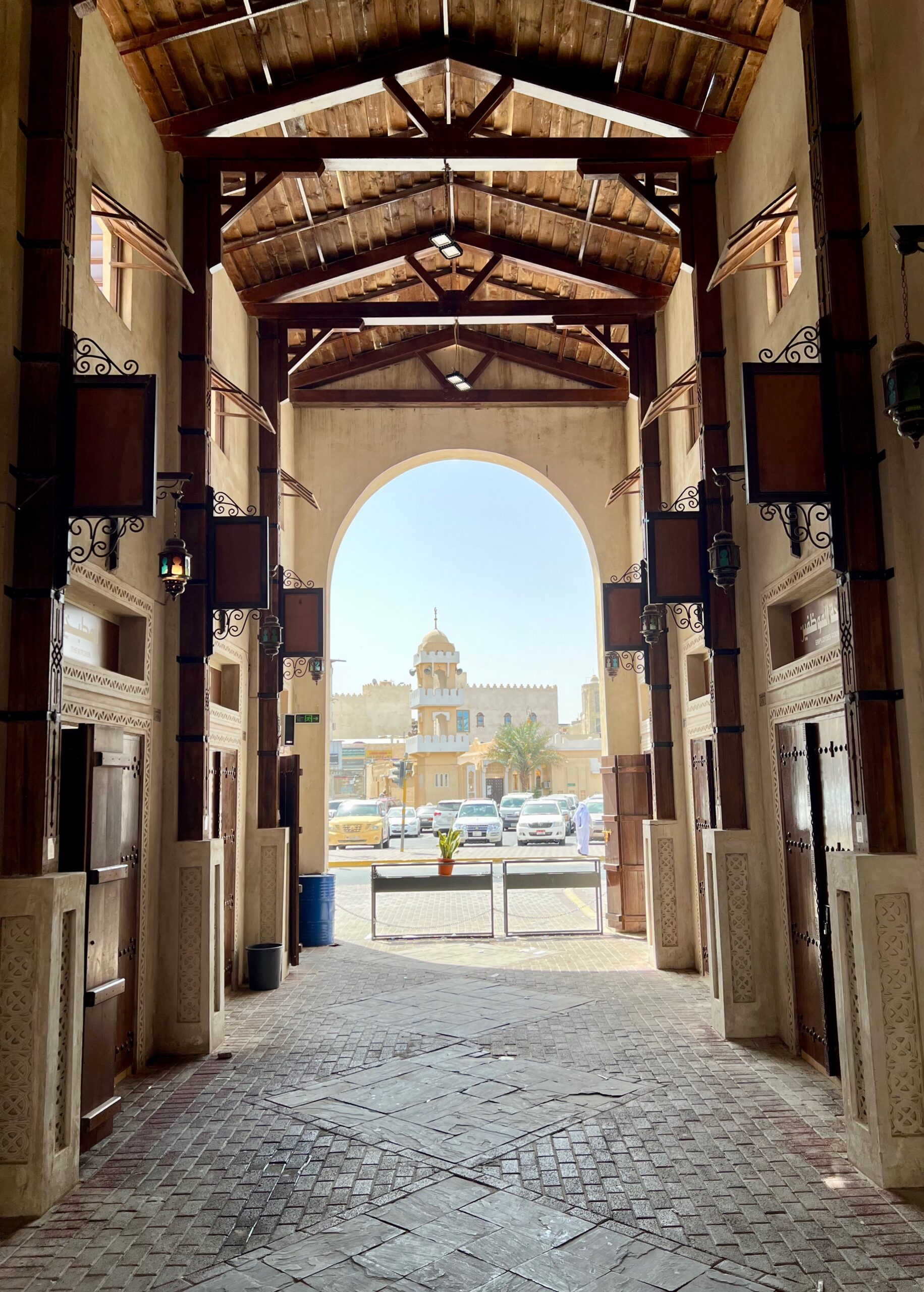
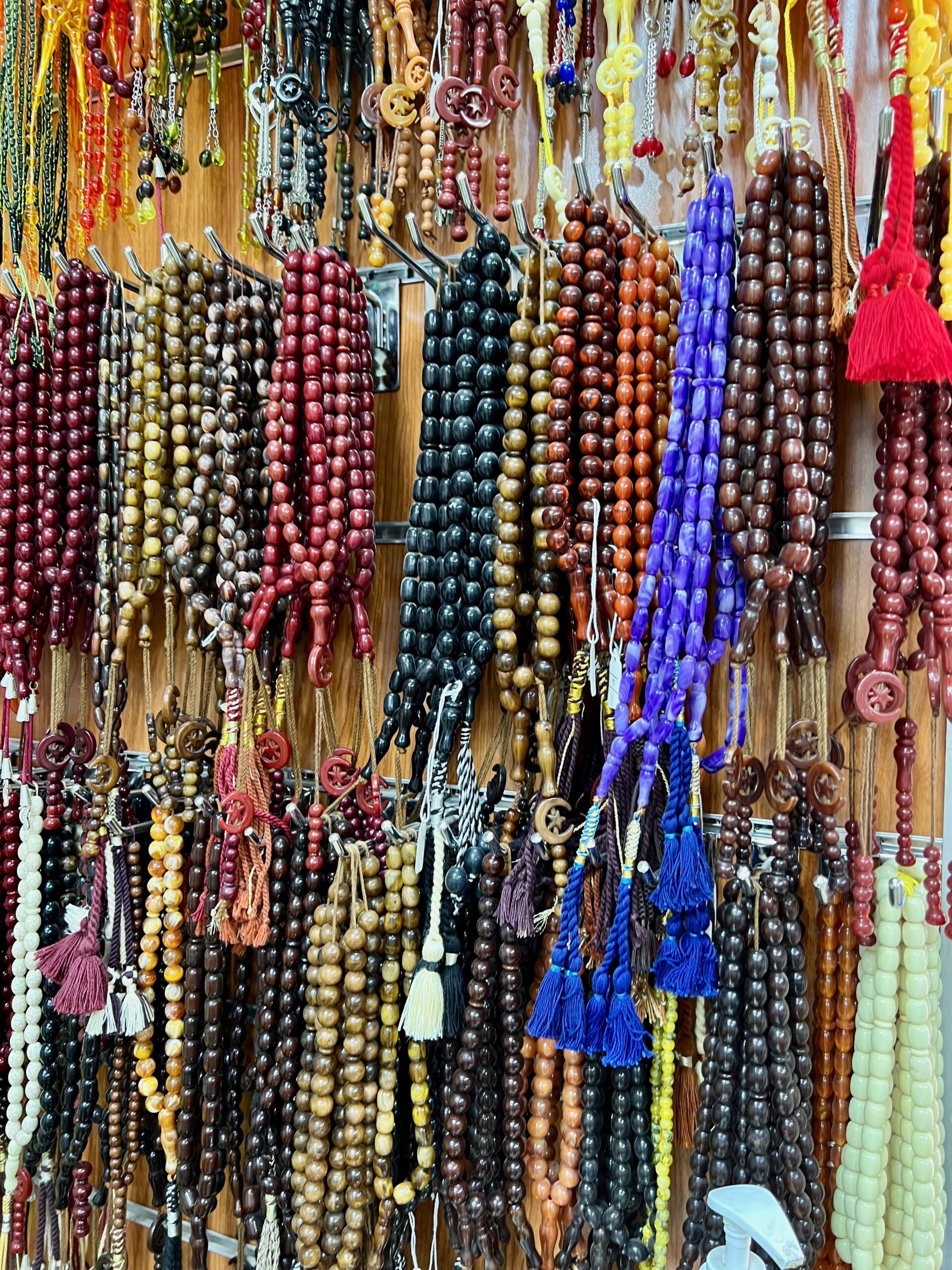
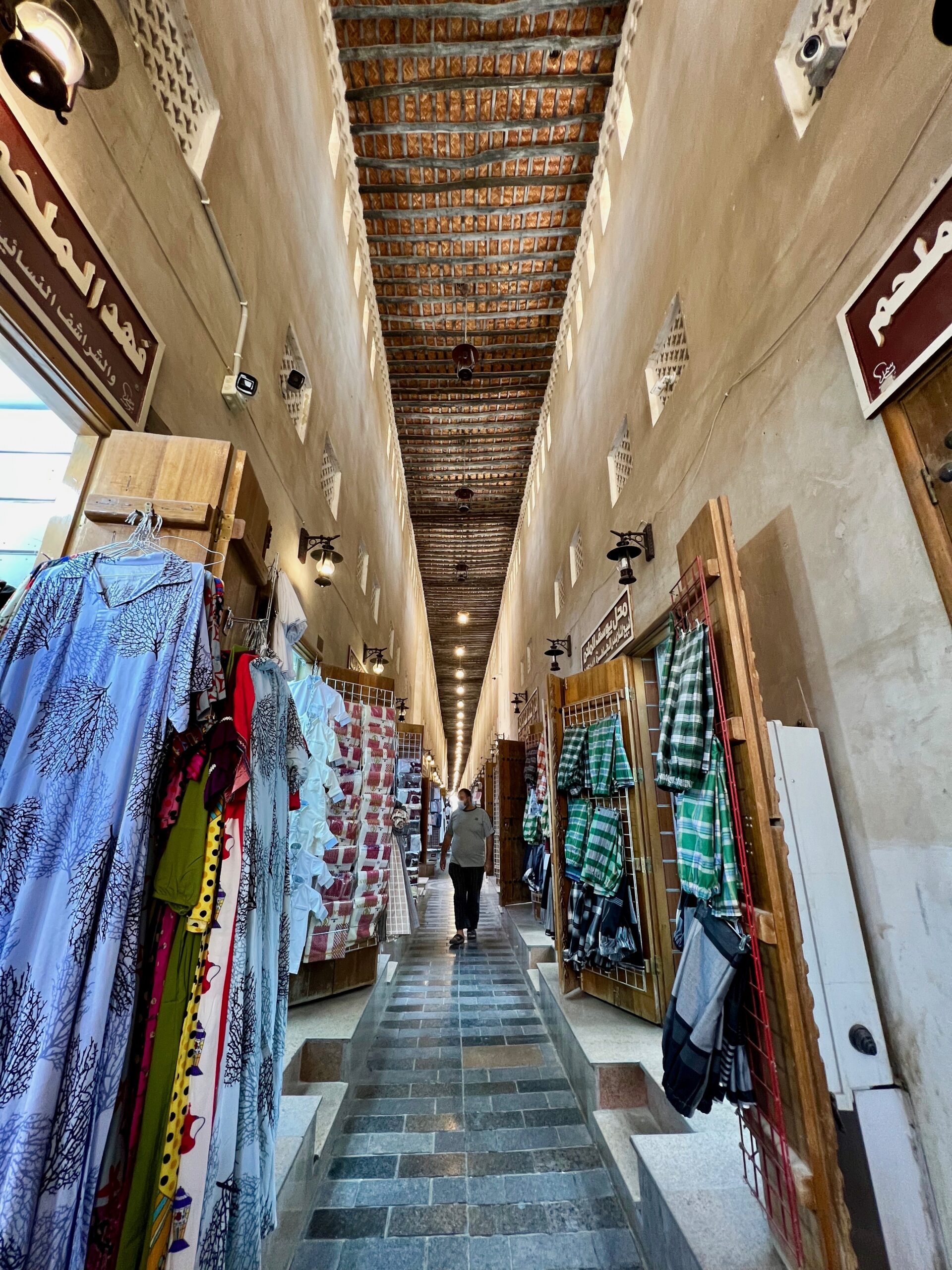
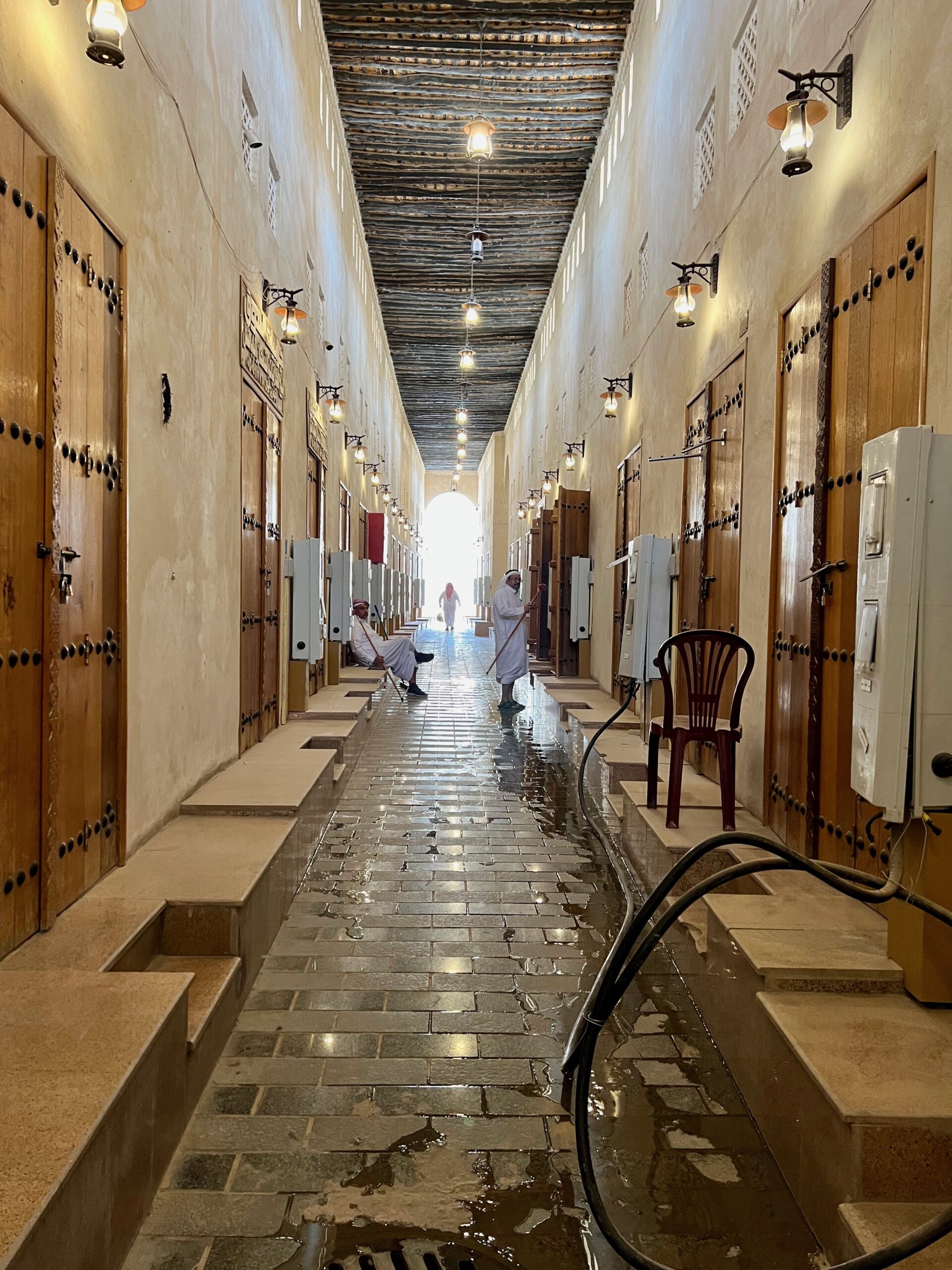
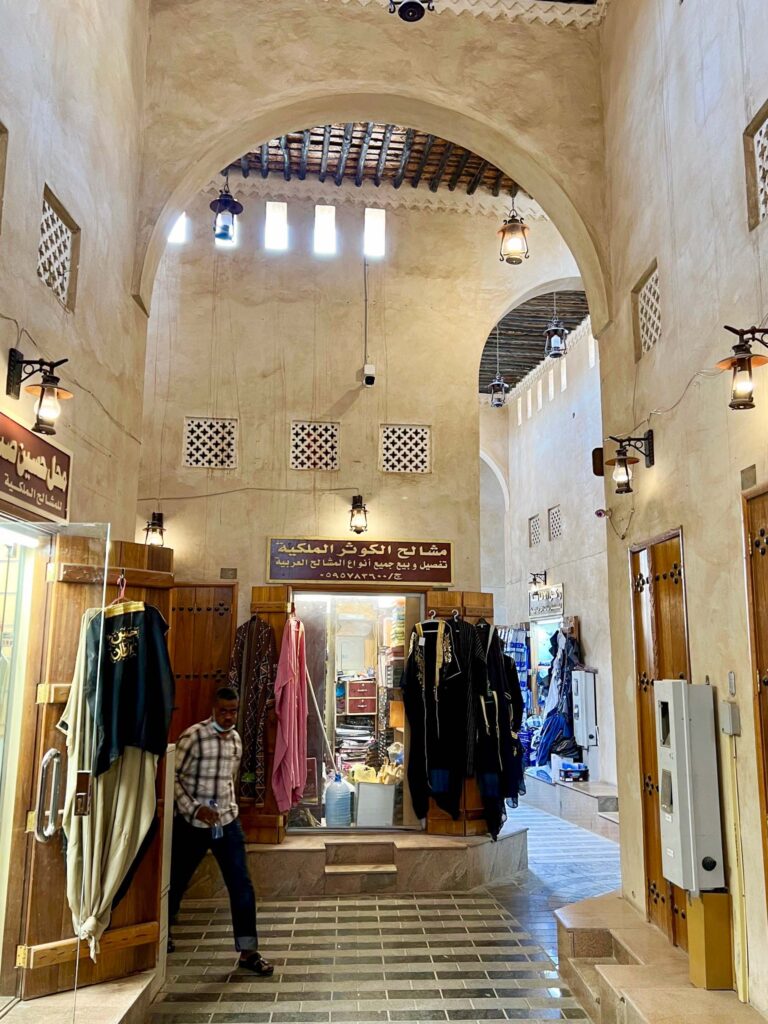
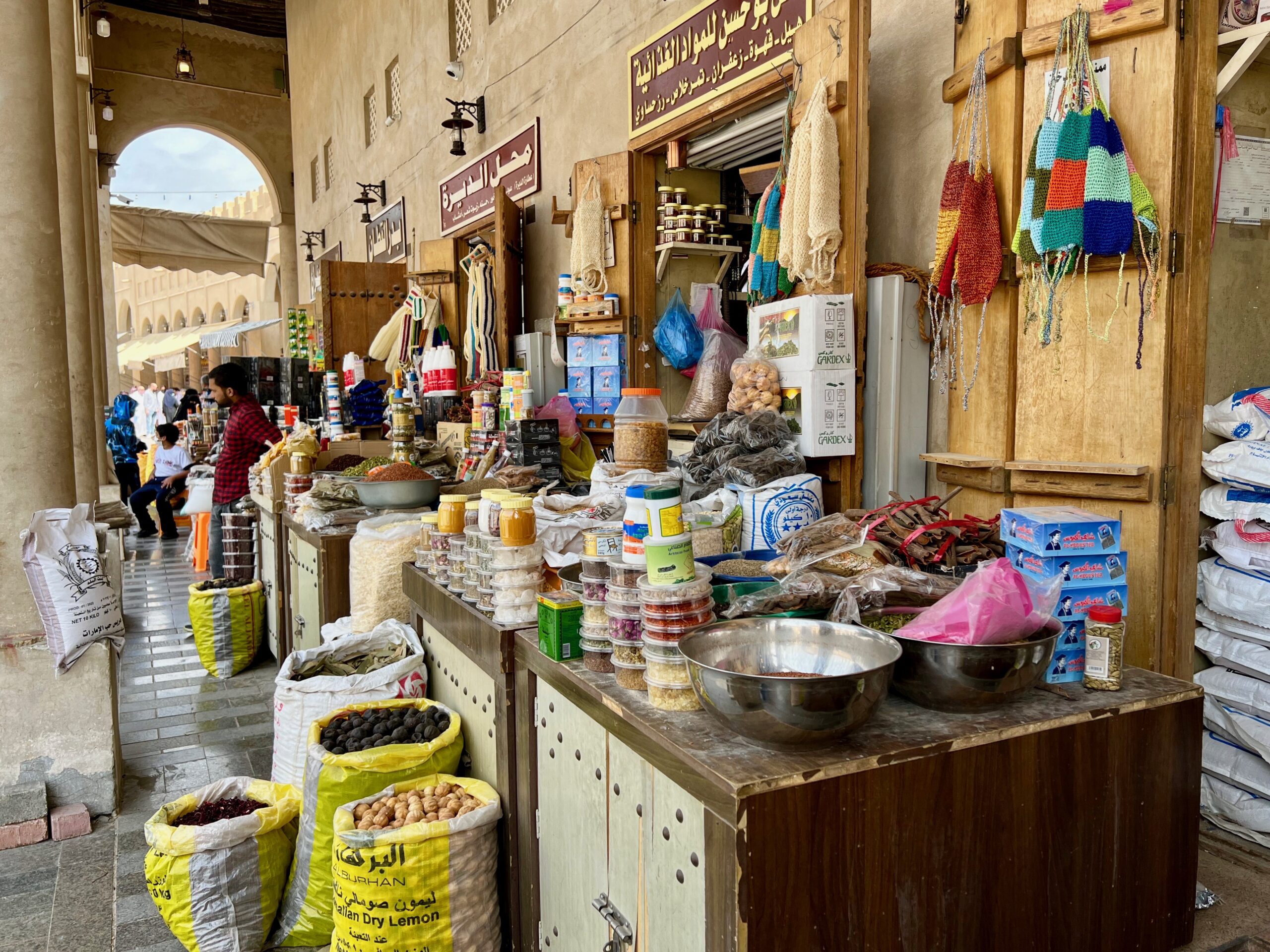
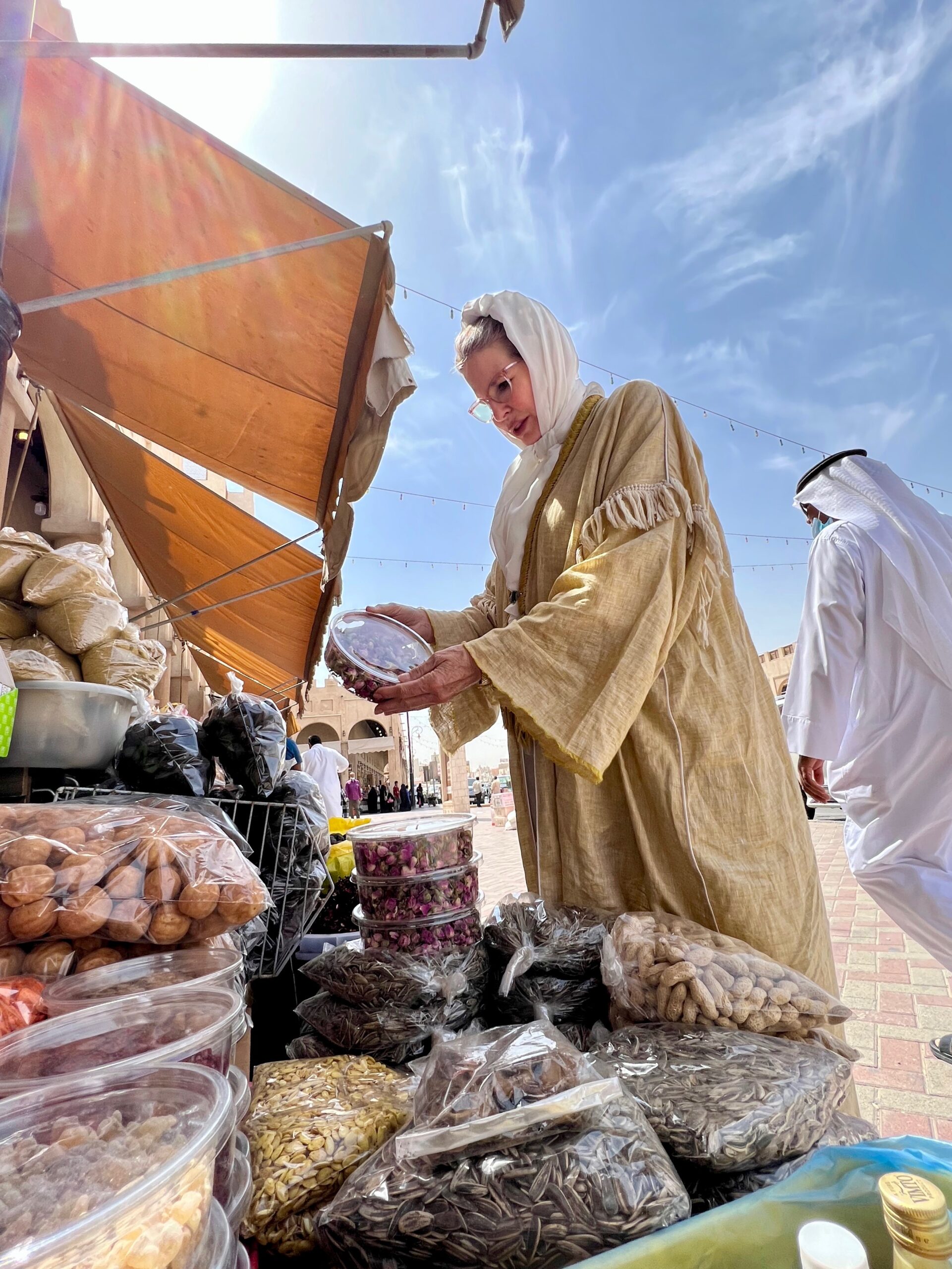
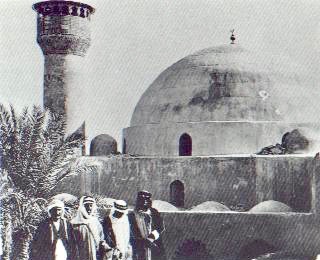
Ibrahim Palace, also referred to as Qasr Ibrahim, is a distinctive fortified area in central Hofuf in the Al-Ahsa Oasis. It was probably founded before the Ottoman conquest of the region in 1549. The area was developed over various periods to include a domed mosque, a diwan building, a Turkish bath, and defensive walls.
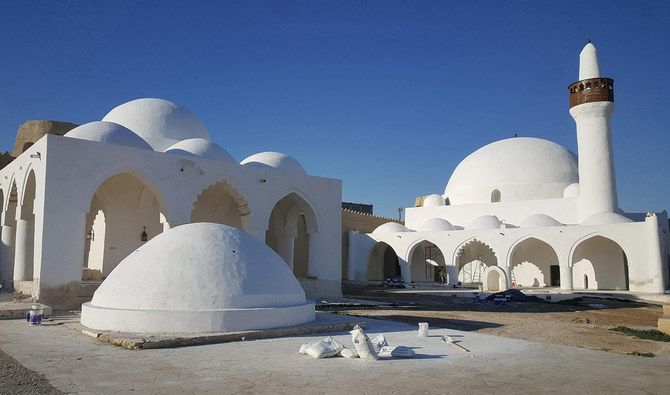
Ibrahim Palace covers an area of almost 18,000 square feet (16,500 square meters) and combines both Islamic and military architecture.
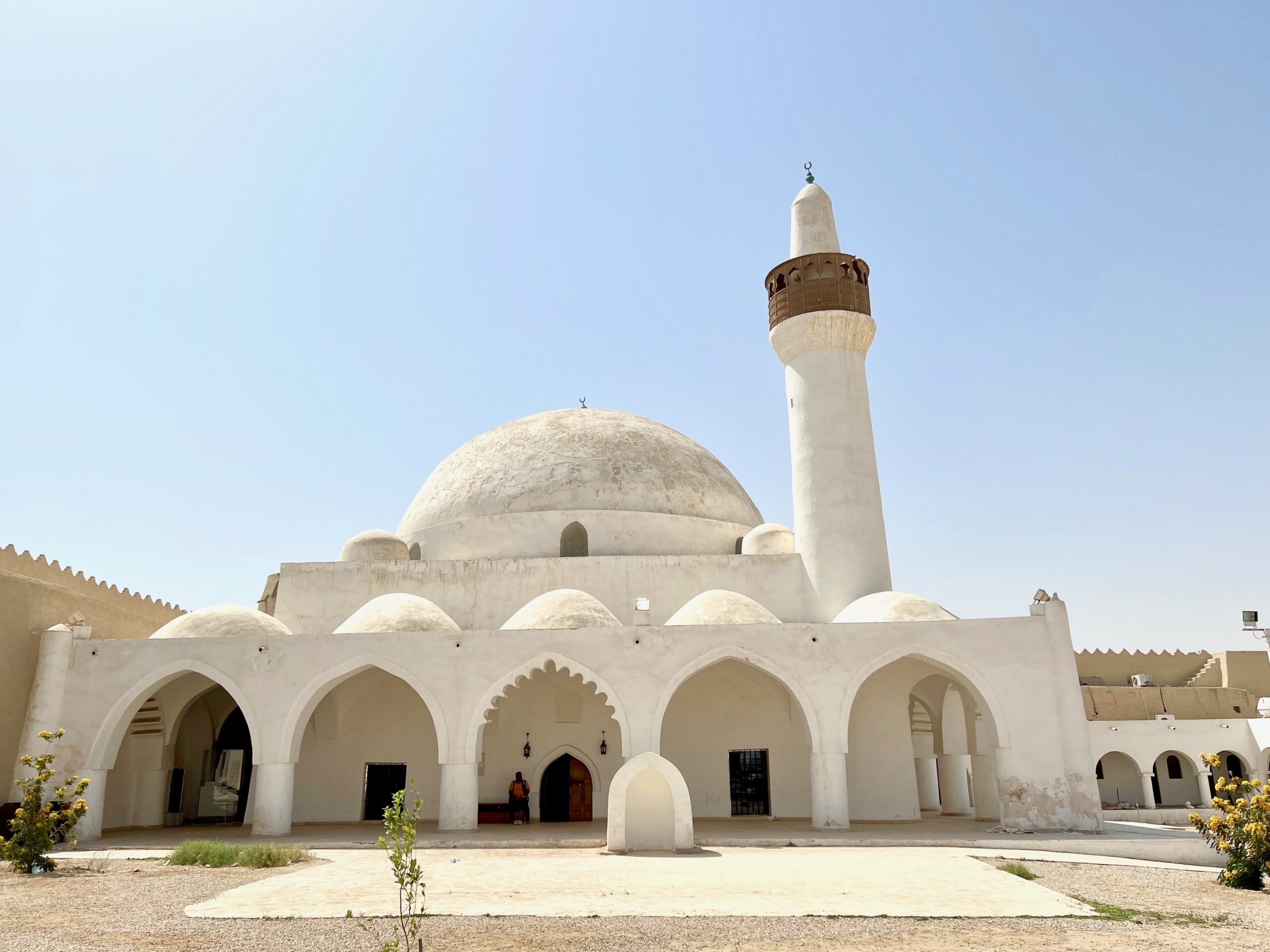

A noteworthy example of Ottoman-era building in Al-Ahsa, Ibrahim Palace was one among the 12 components highlighted when Al-Ahsa Oasis became the fifth Saudi Arabian site to be granted inscription on the UNESCO World Heritage List.
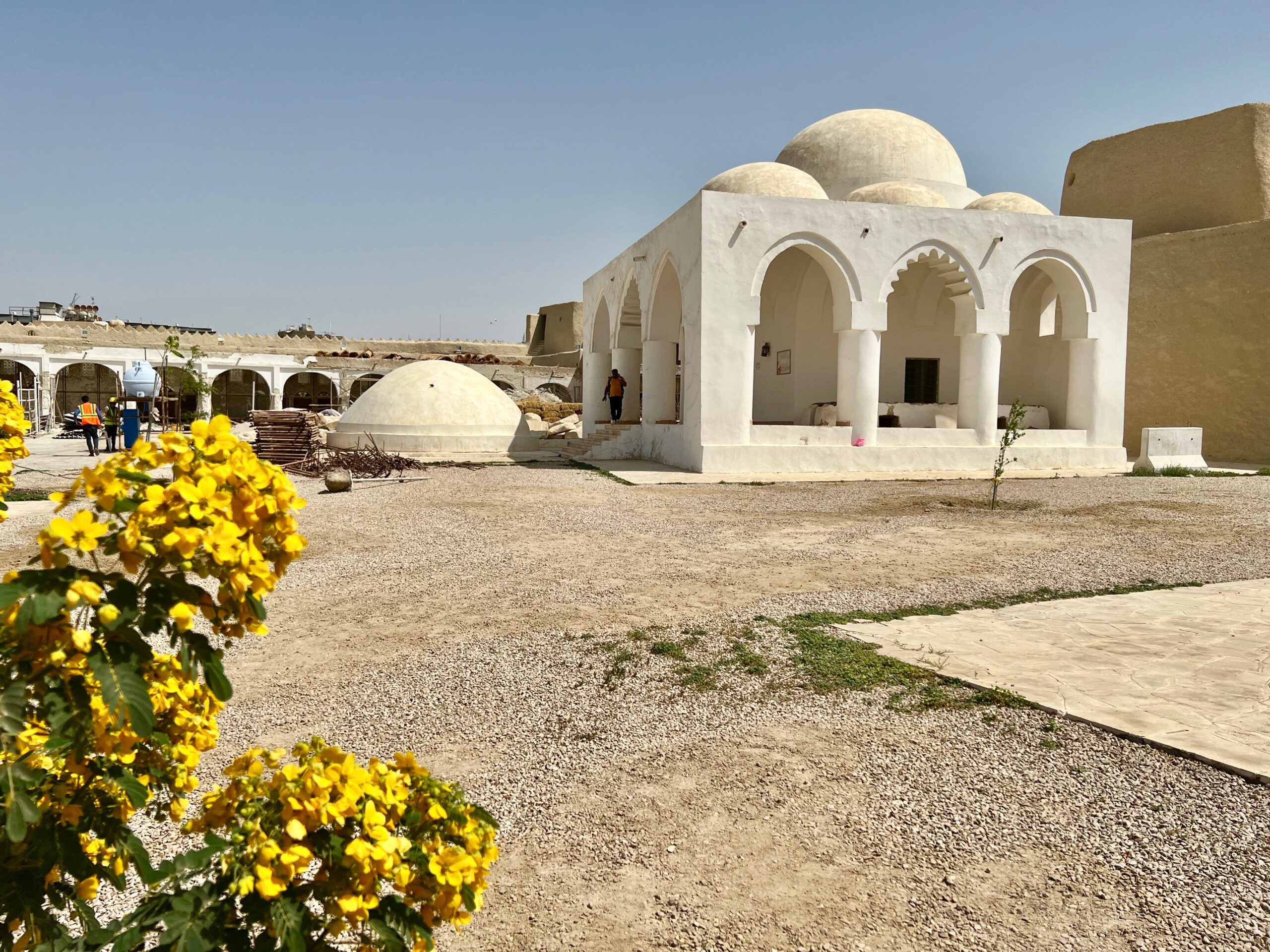
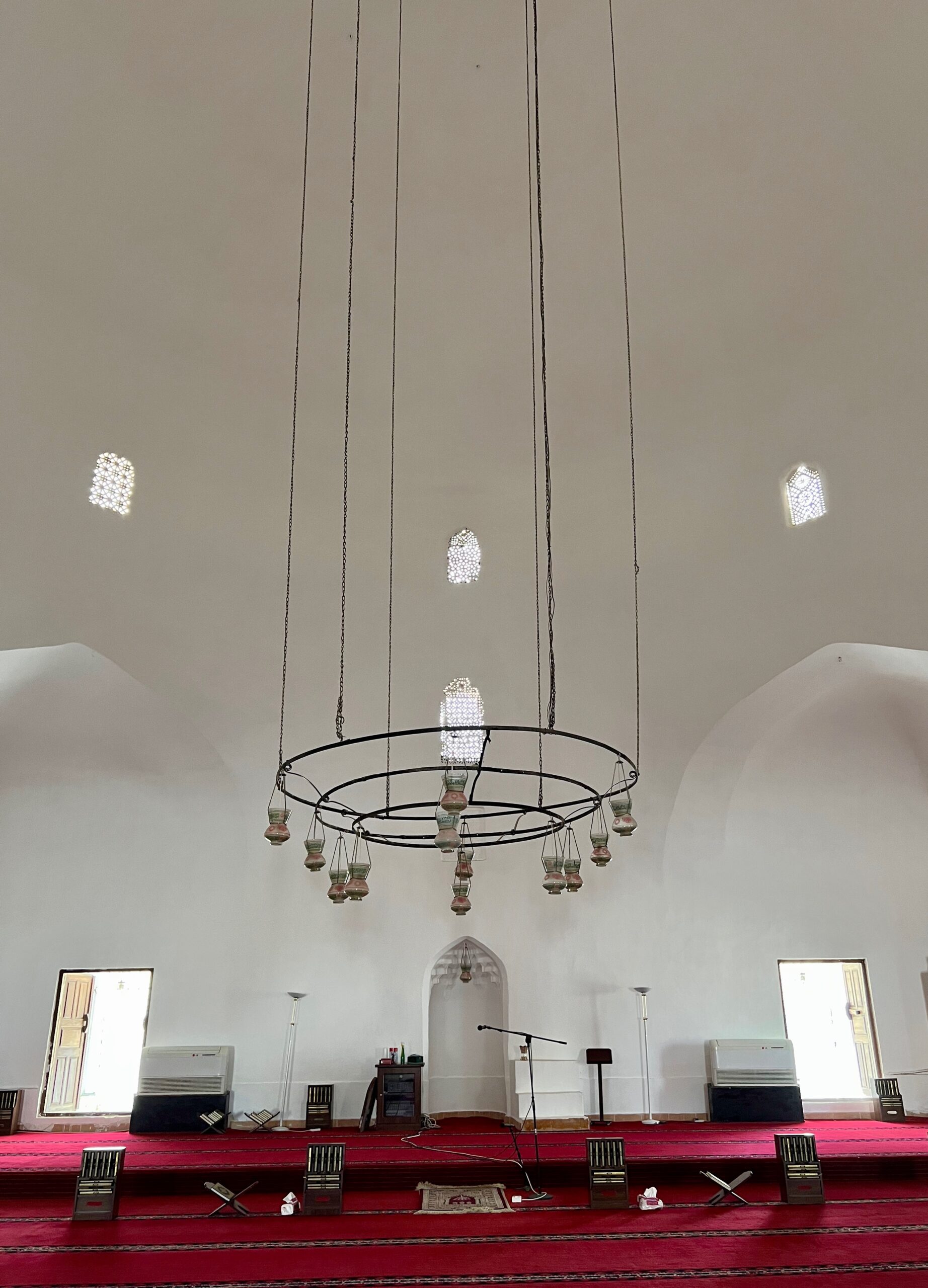
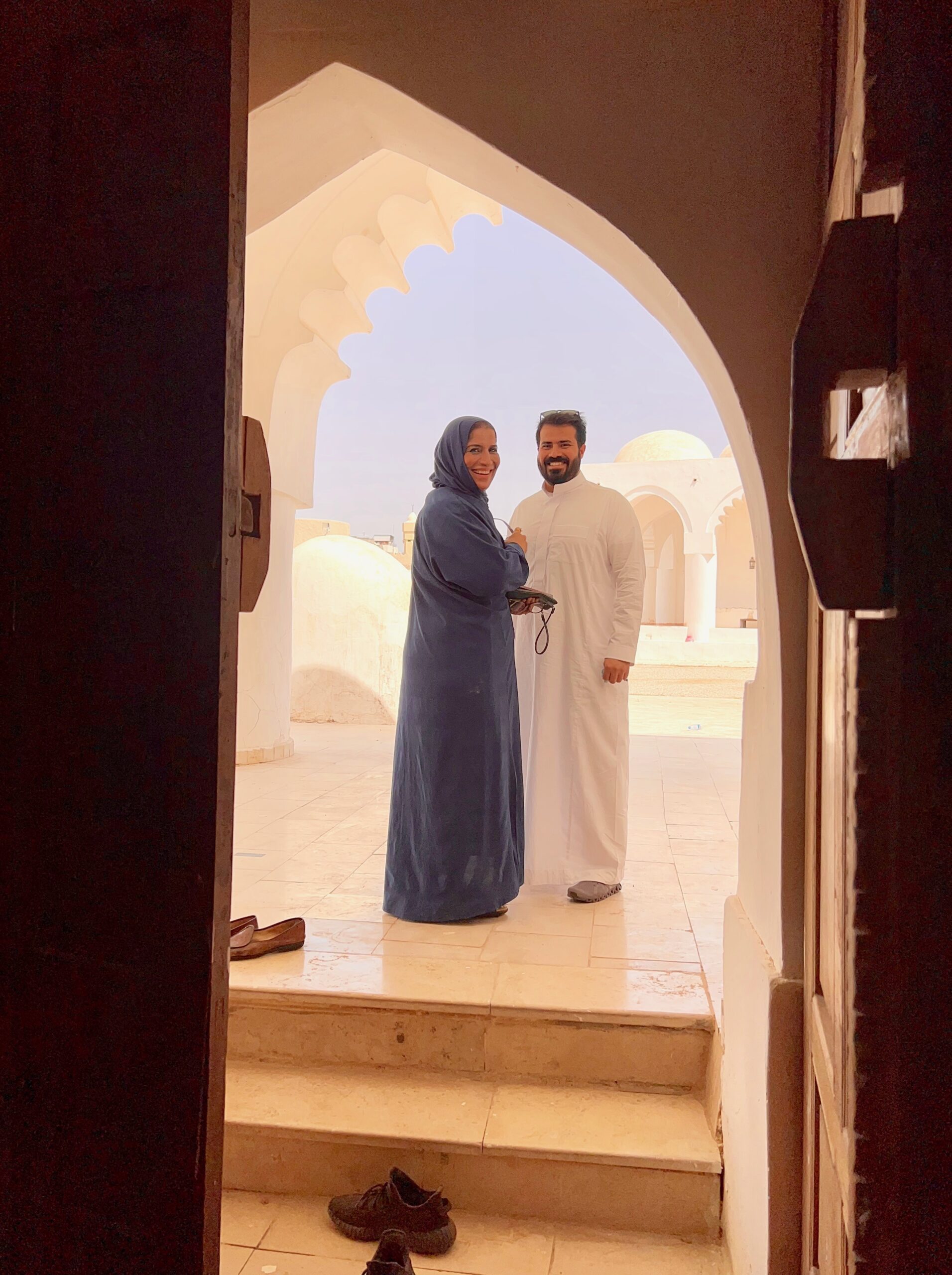
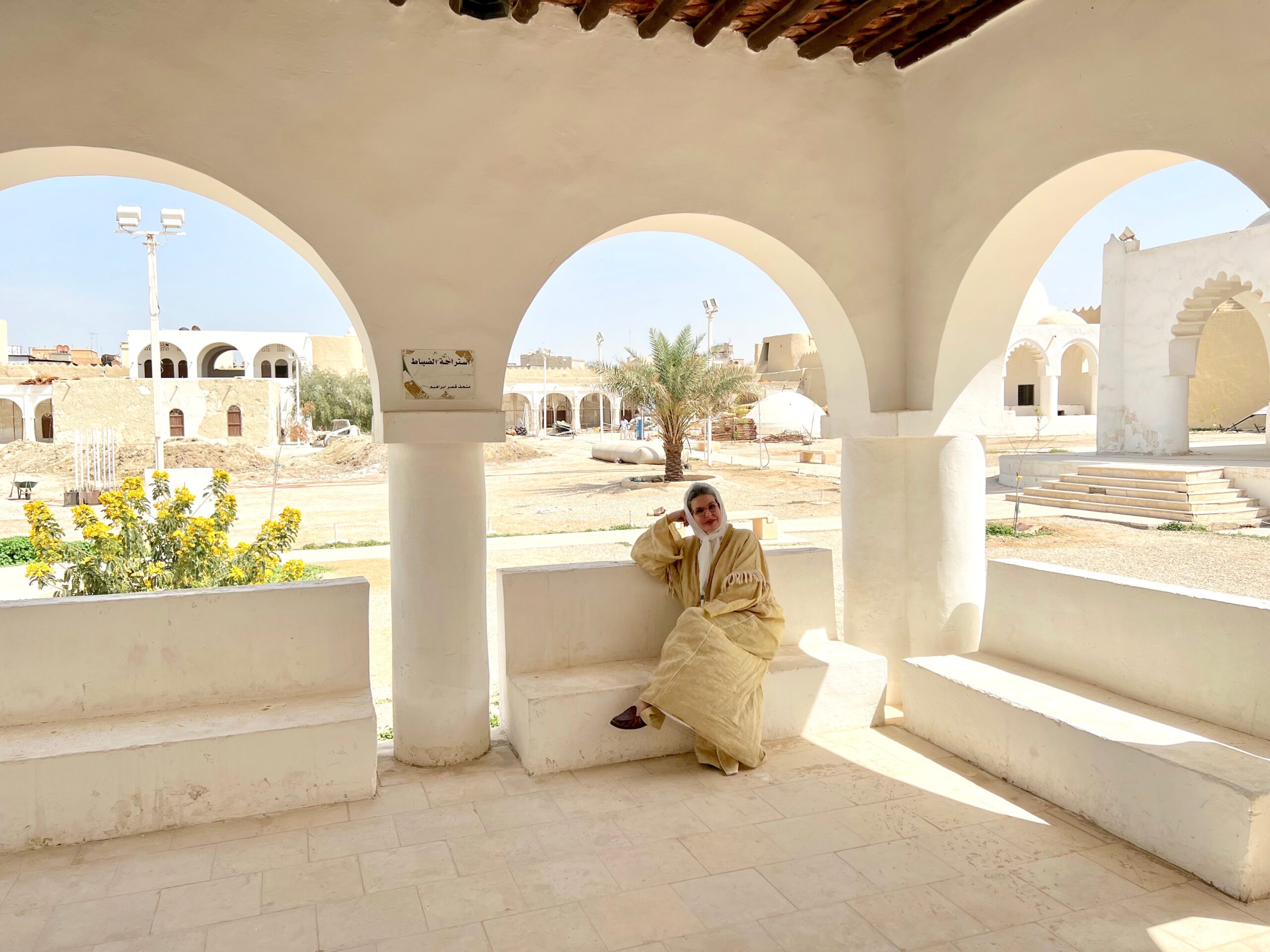
The palace reflects two architecture styles:
- Islamic style: This style can be seen in semi-circular arches, Islamic domes, and the mihrab (a niche in the wall of a mosque, at the point nearest to Makkah, toward which the congregation faces to pray) of the mosque. The minaret is made of stone and influenced from Turkish designs. It is a tall minaret and has a spiral staircase.
- Military style: This is represented by the towers that surround the palace as well as the residential soldier’s barracks, which are located in the east of the palace area near the horse stables.
The palace was constructed with local materials. While its walls were made of mud mixed with straw, the ceilings are palm trunks. The doors are sandalwood. The floors are stone.
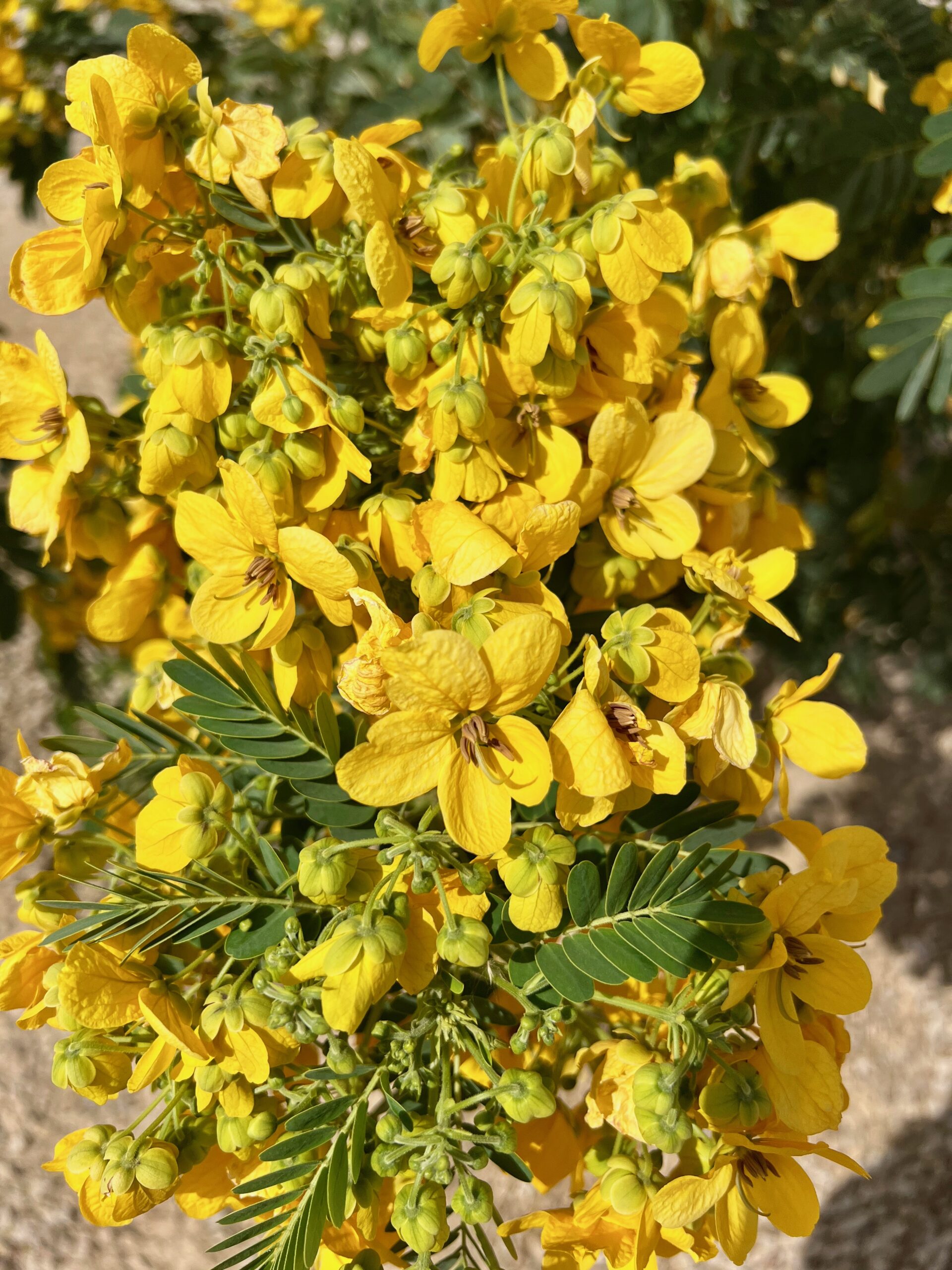
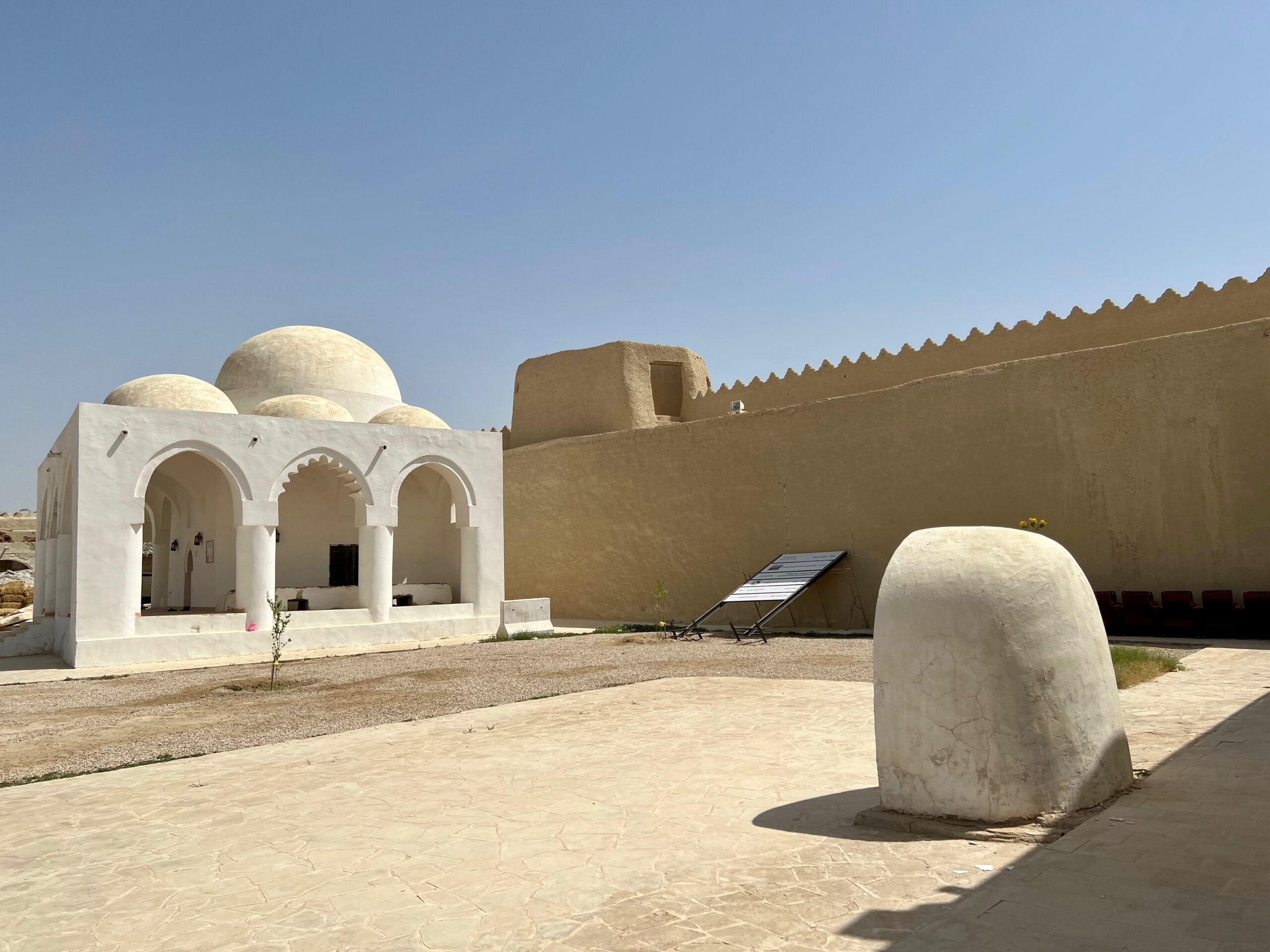
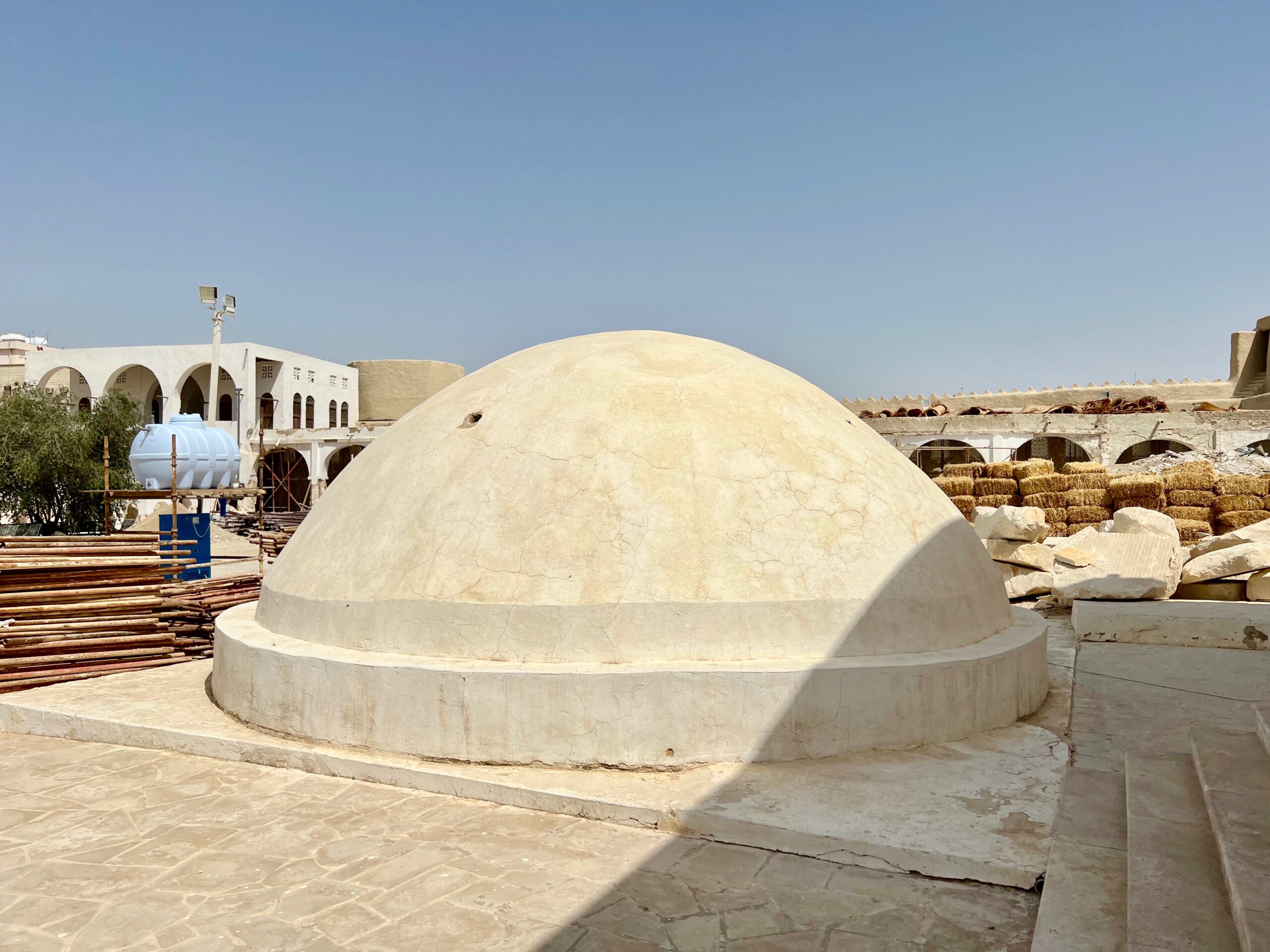
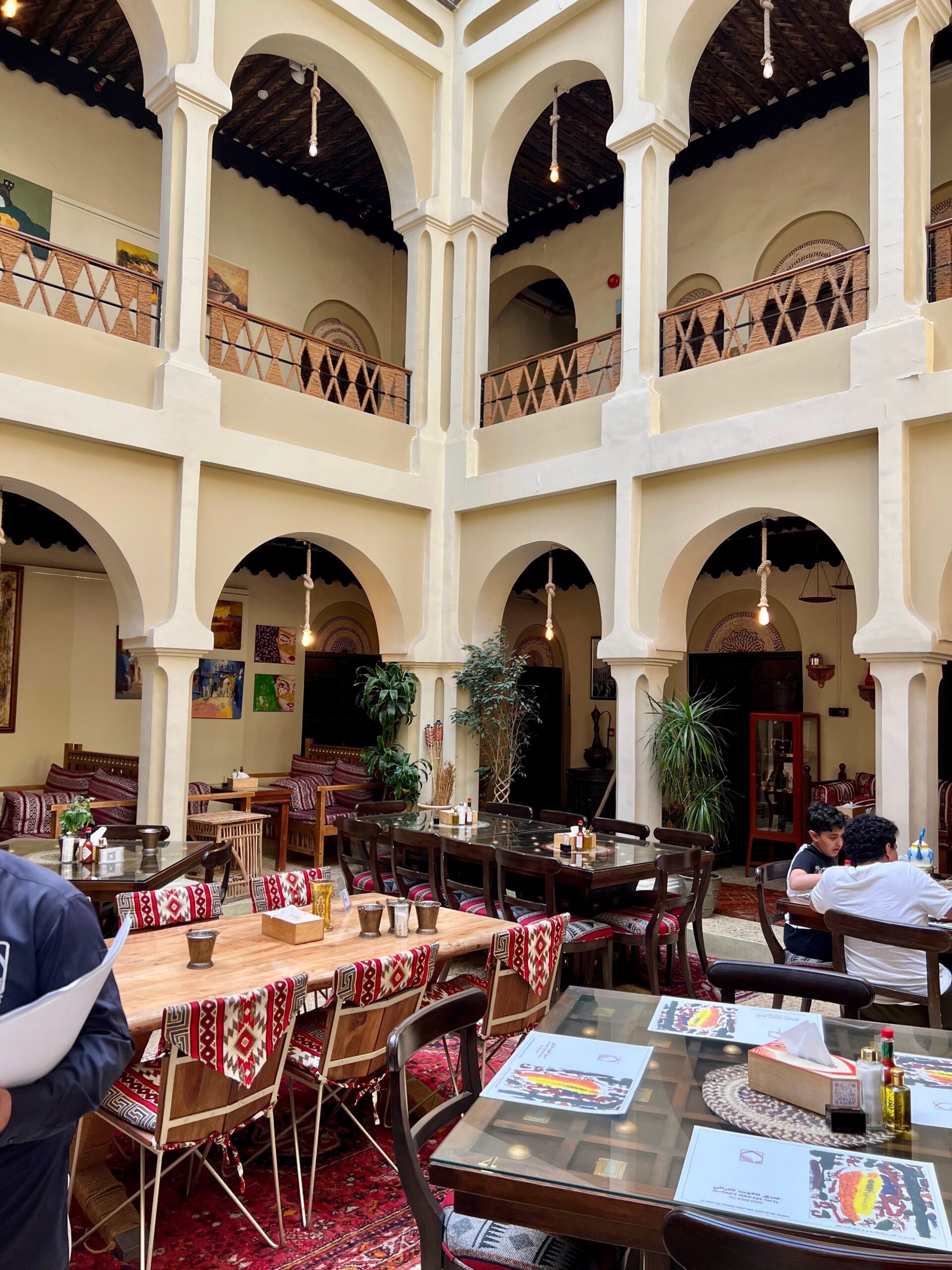
The Al-Koot Hotel and Restaurant’s building was originally a 200-year old palace. The restaurant has local women in the kitchen preparing family recipes that have been passed down from generation to generation.
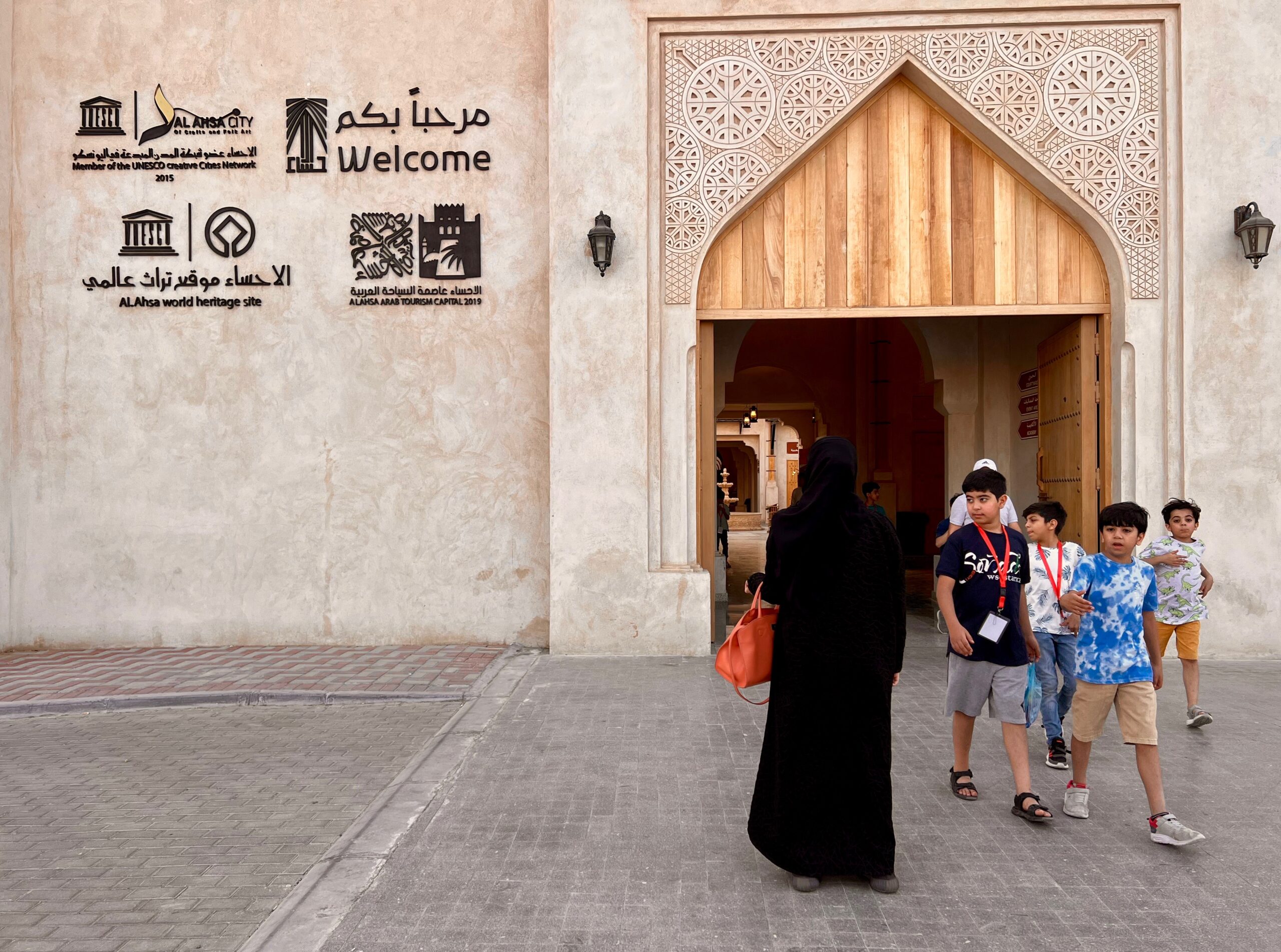
The local Craftsmen Market in central Hofuf features some of Al-Ahsa’s heritage products. It celebrates popular traditions that have developed over generations.
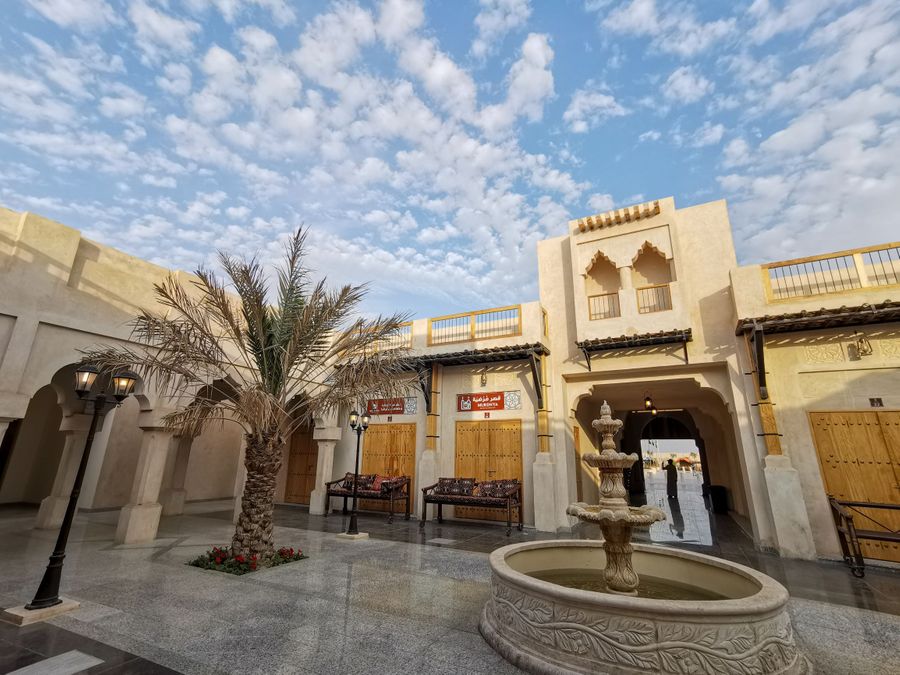

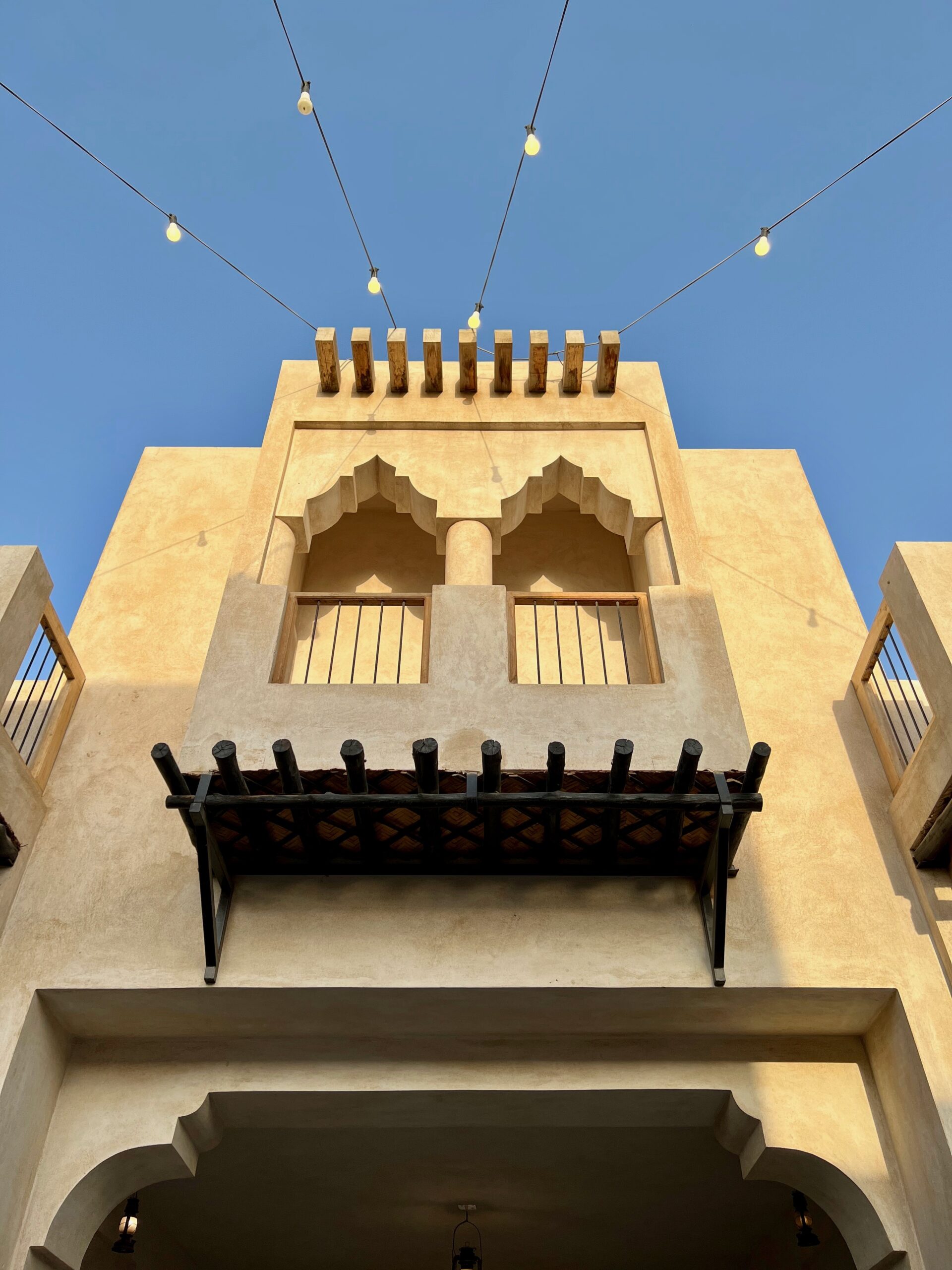
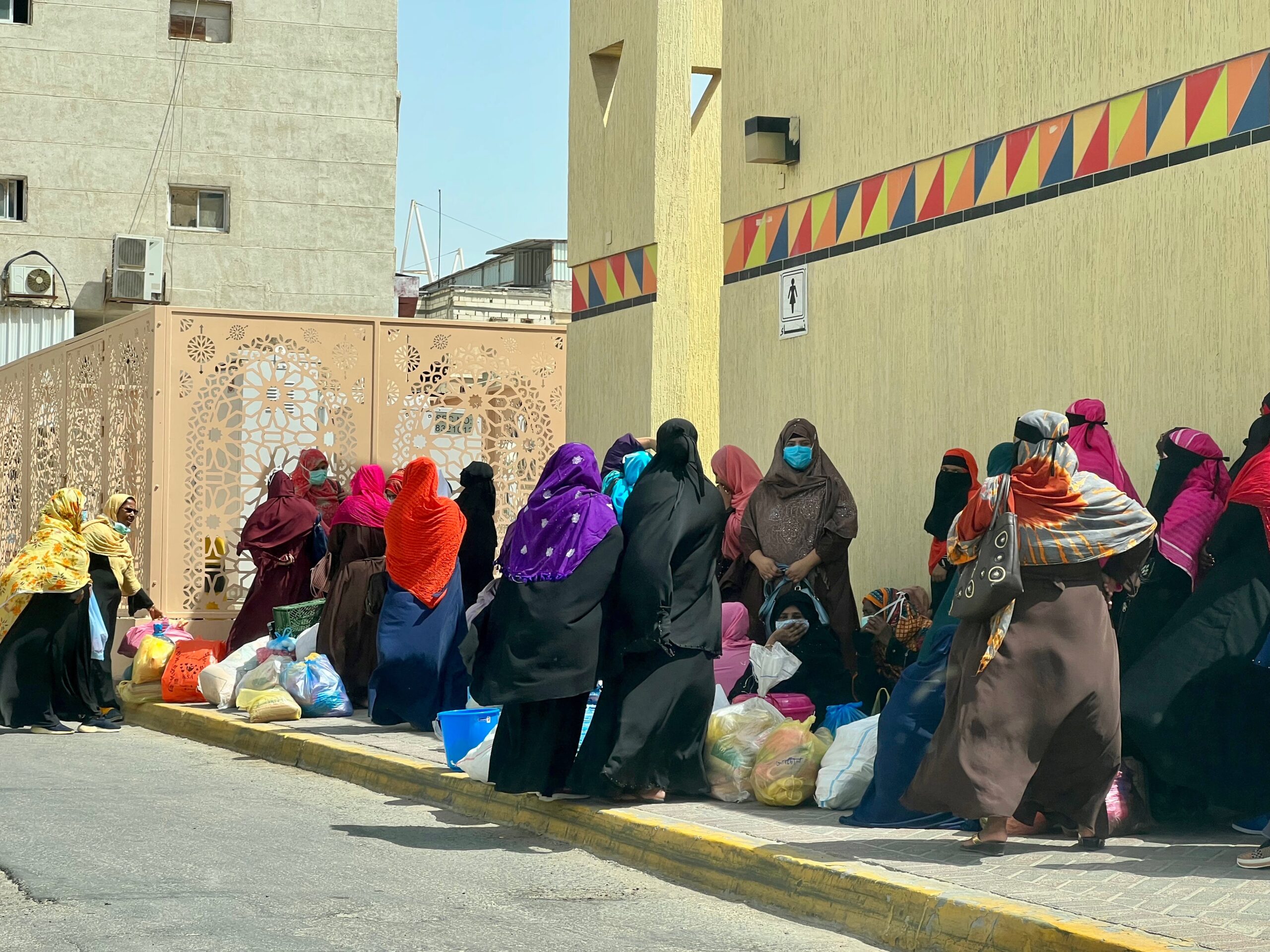
One of the most famous traditional bakeries in the city of Hofuf is Al-Khudood Bakery. It operates out of a restored heritage building.
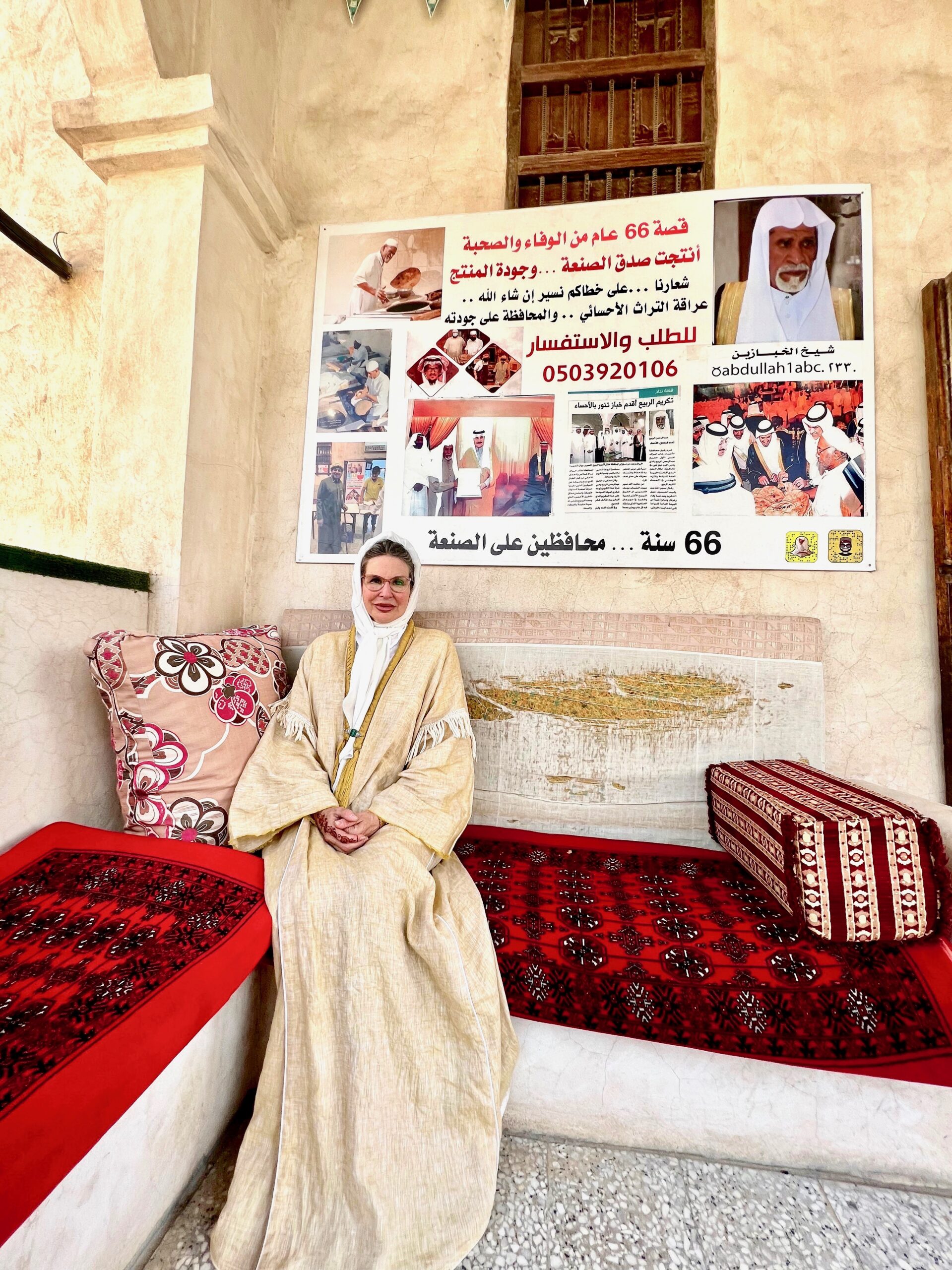
Red bread is a notable dish from the Eastern Province. It is not only known for its great taste but also its high nutritional value. Dates from Al-Ahsa’s farms are what provide this bread its distinctive red color. The bread can typically be found in traditional bakeries across Al-Ahsa, especially during Ramadan when demand is high.
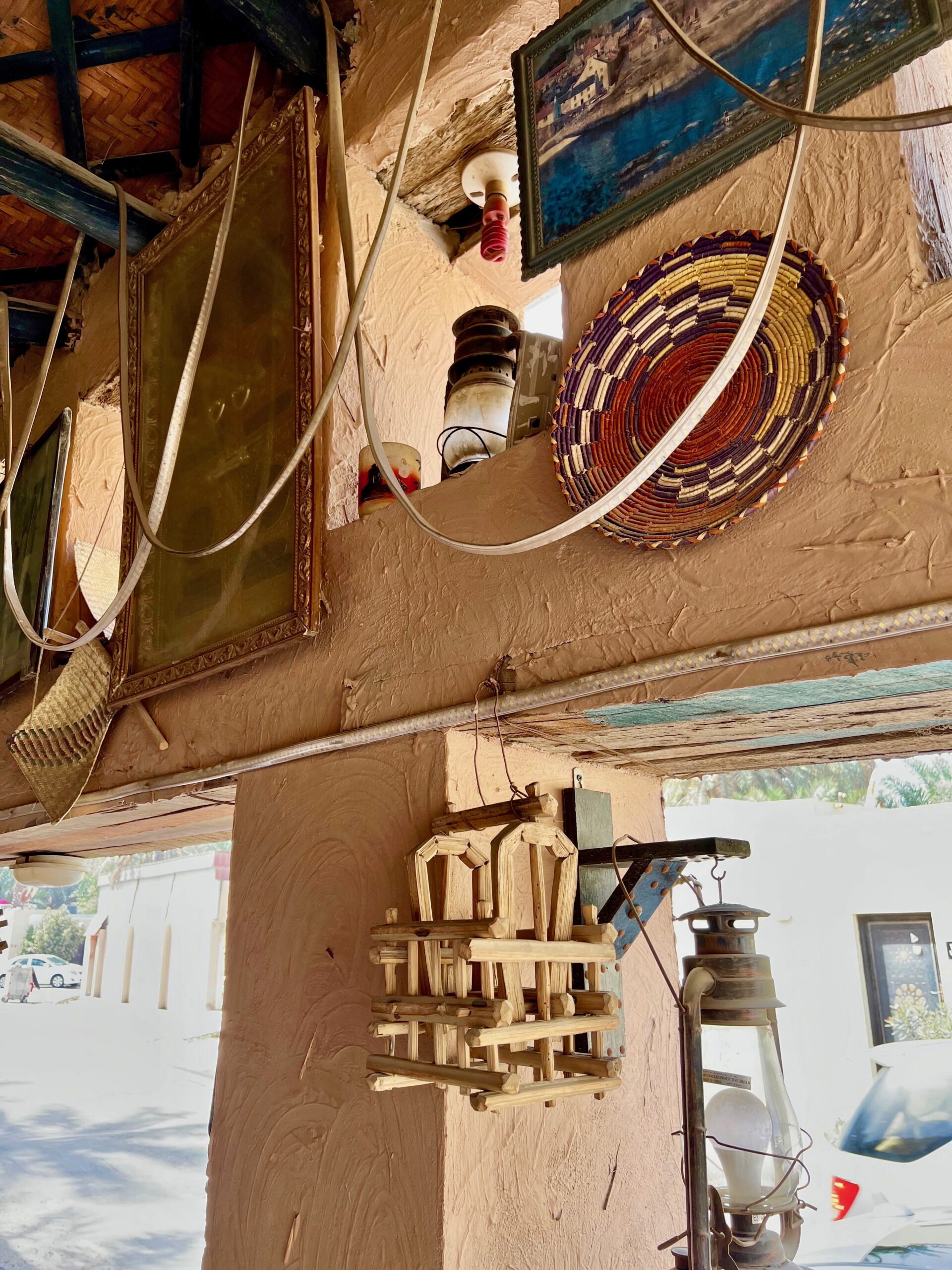
The recipe for red bread has been passed down over generations; dates are soaked with water and left to ferment before being kneaded together with typical ingredients that include wheat, dates, water, cardamom, saffron, Hasawiya halwah, sesame and black seed.


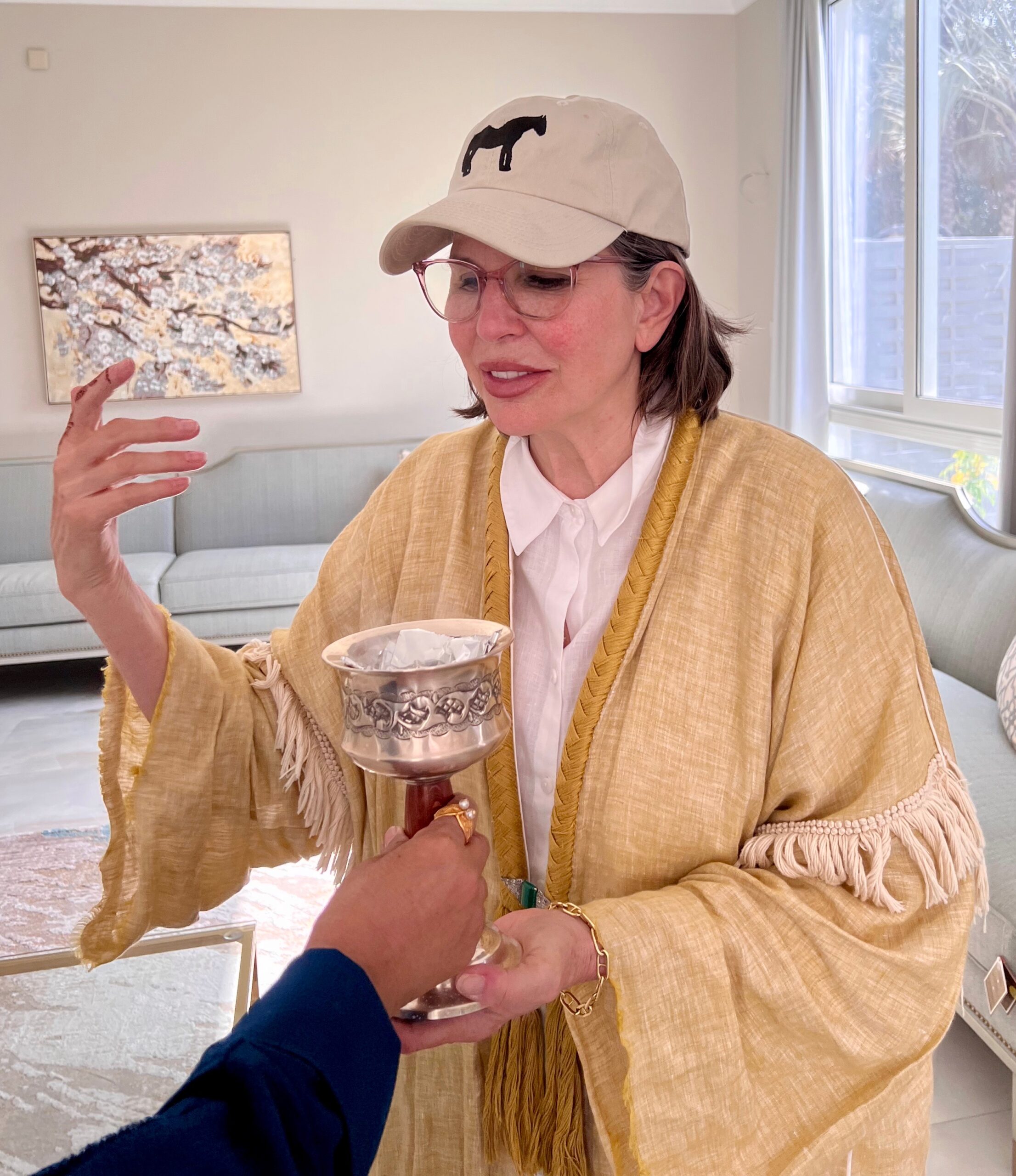
Oud is burned in an elegant, ancient ritual that continues today as a symbol of warm hospitality. Scent can be a powerful way to access spirituality. Over the centuries and around the globe, there is one scent that is considered supreme. Potent, mystical, and sweet. Inhabitants of the Arabian Peninsula have been burning oud wood chips in their homes for thousands of years as an expression of hospitality. And even more: they believe it removes negative energies and enhances awareness.
Oud is known as “the wood of gods” and as agarwood. It comes from the core of Aquilaria trees. Today, the wood primarily sourced from trees in Thailand, Laos, Burma, and India. The smoke is offered to guests so they can scent their hair, clothing and hands. It’s a tradition as integral to hospitality as serving coffee and dates. Oud’s fragrance is sweet, woody, seductive, and a bit smoky. It’s rich with nuances, ranging from musky, leathery tobacco to beet-like sweetness to spicy fragrances. The aroma is often described as the feeling of a warm blanket.
There are many types of oud, often named after the regions in which they were produced. The scent will vary slightly depending on where it was harvested, how it was aged after harvesting, and if any additives were used. Its strong fragrance stays on clothes for long periods and fills the air with a lovely smell that dispels all kinds of odors. It is said that oud oil mixed with raw ambergris and musk can be used in the treatment of certain diseases.
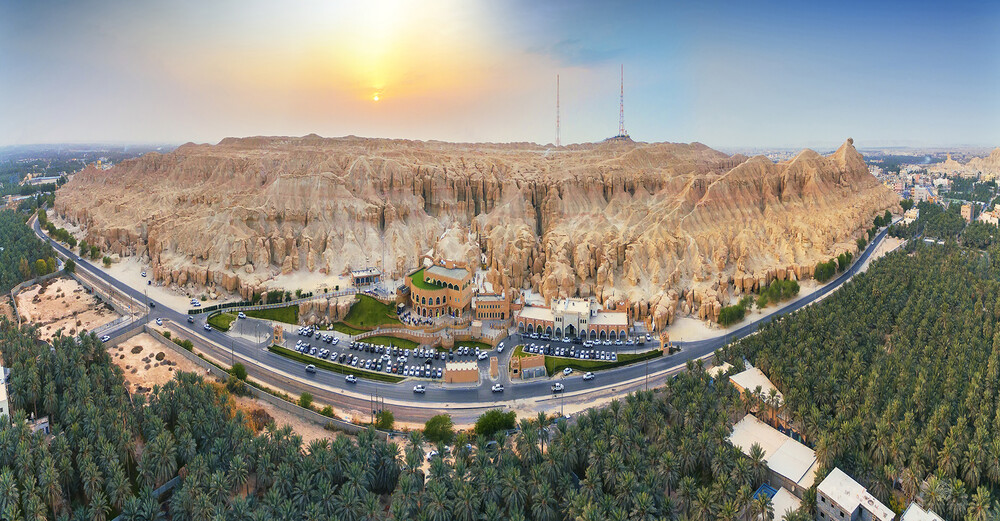
Al Qarah Mountain contains evidence of ancient settlements dating back to 5,000 BC. It is located at the eastern edge of the Shadqam plateau, which links to Kuwait and Iraq in the north and the Rub’ al Khali in the south. Its network of curves and caves are a result of a phenomenon known as sub-aerial weathering, where the limestone rock has been crafted from rain and rivers rather than ground water. This has led to the mountain’s remarkable mushroom-like shapes, narrow canyons, and tall interior passages.
There is a popular belief that rocks in the mountain were formed being underwater millions of years ago. The caves were created due to the tide.


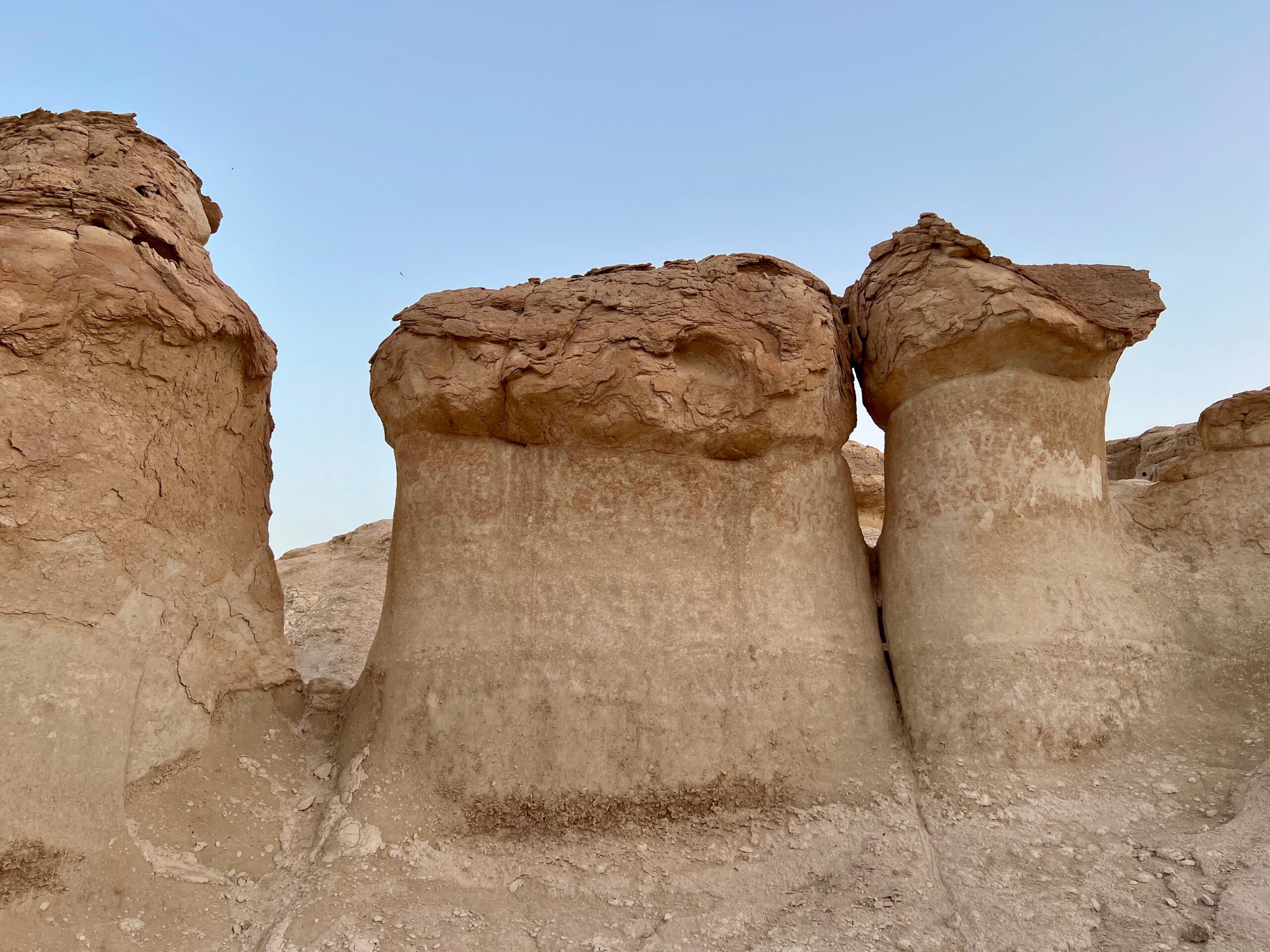

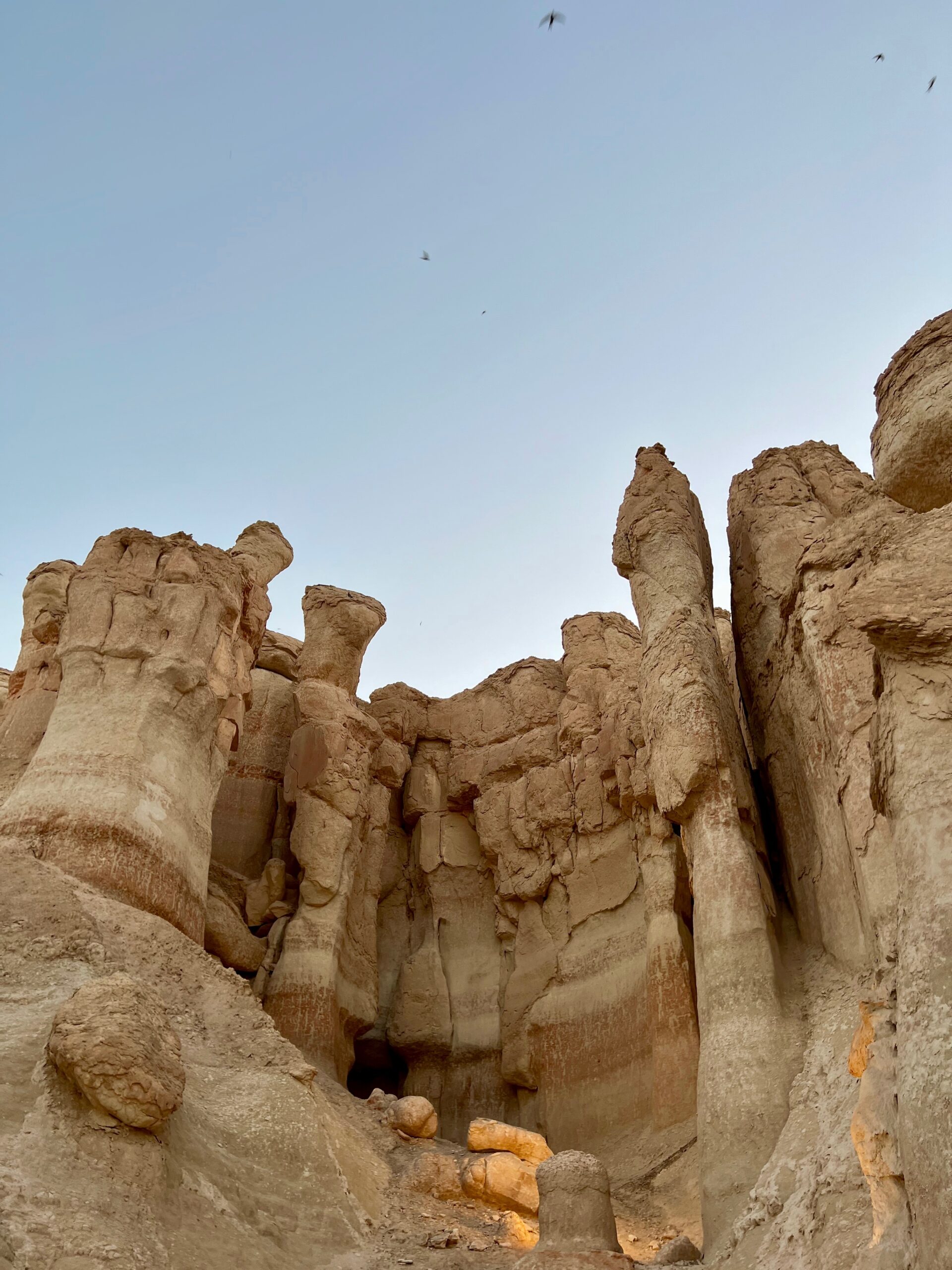
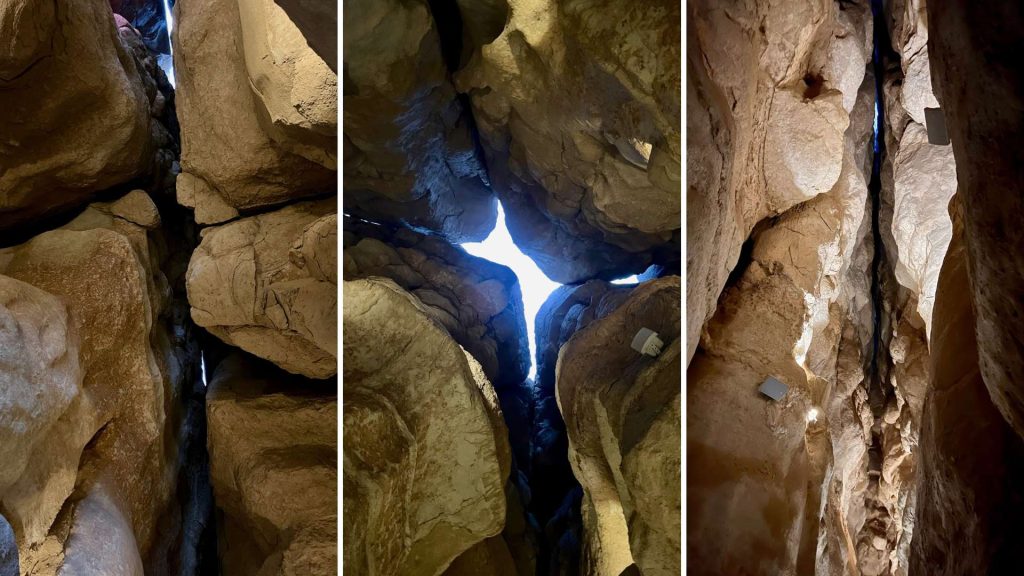
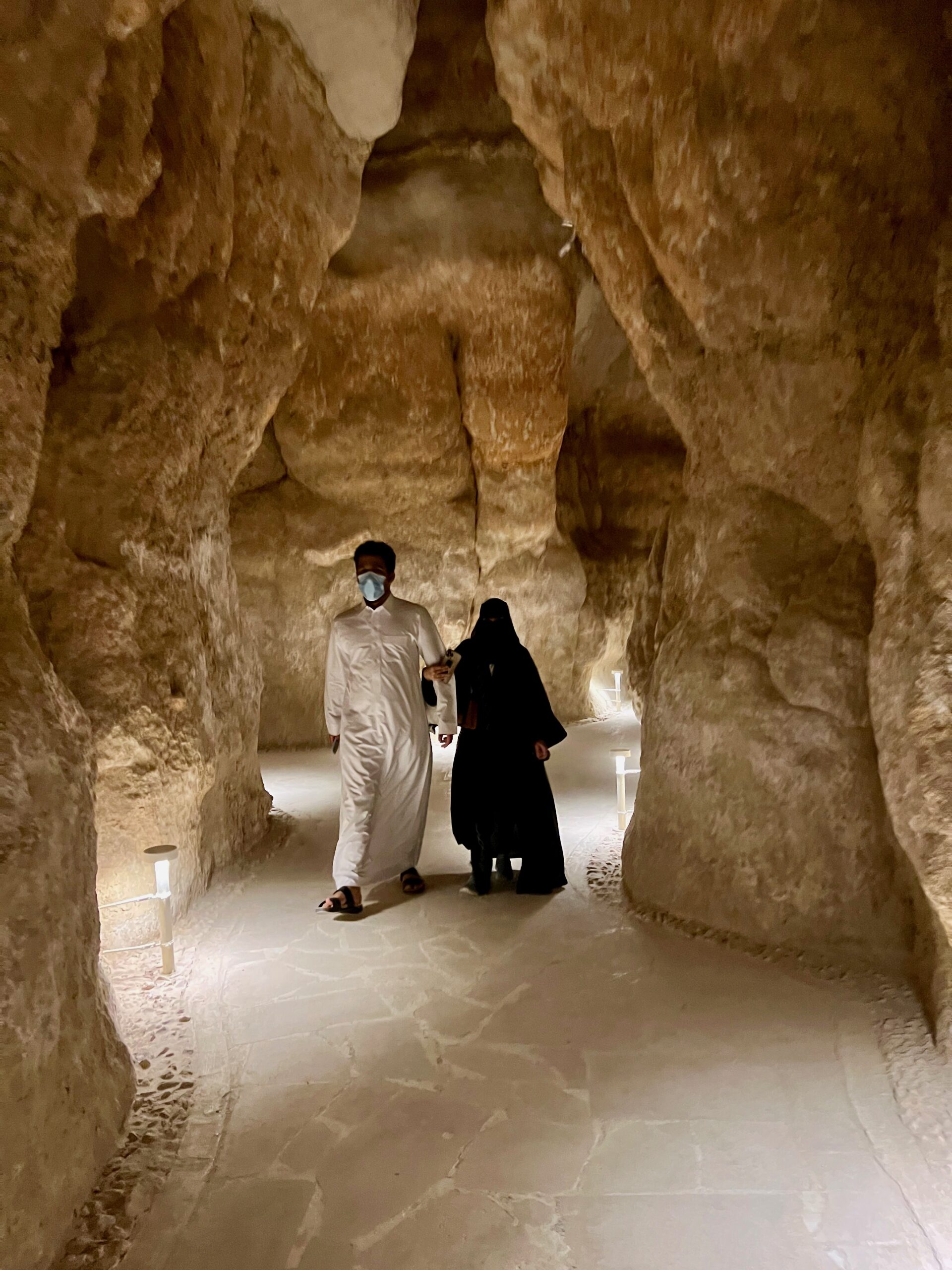
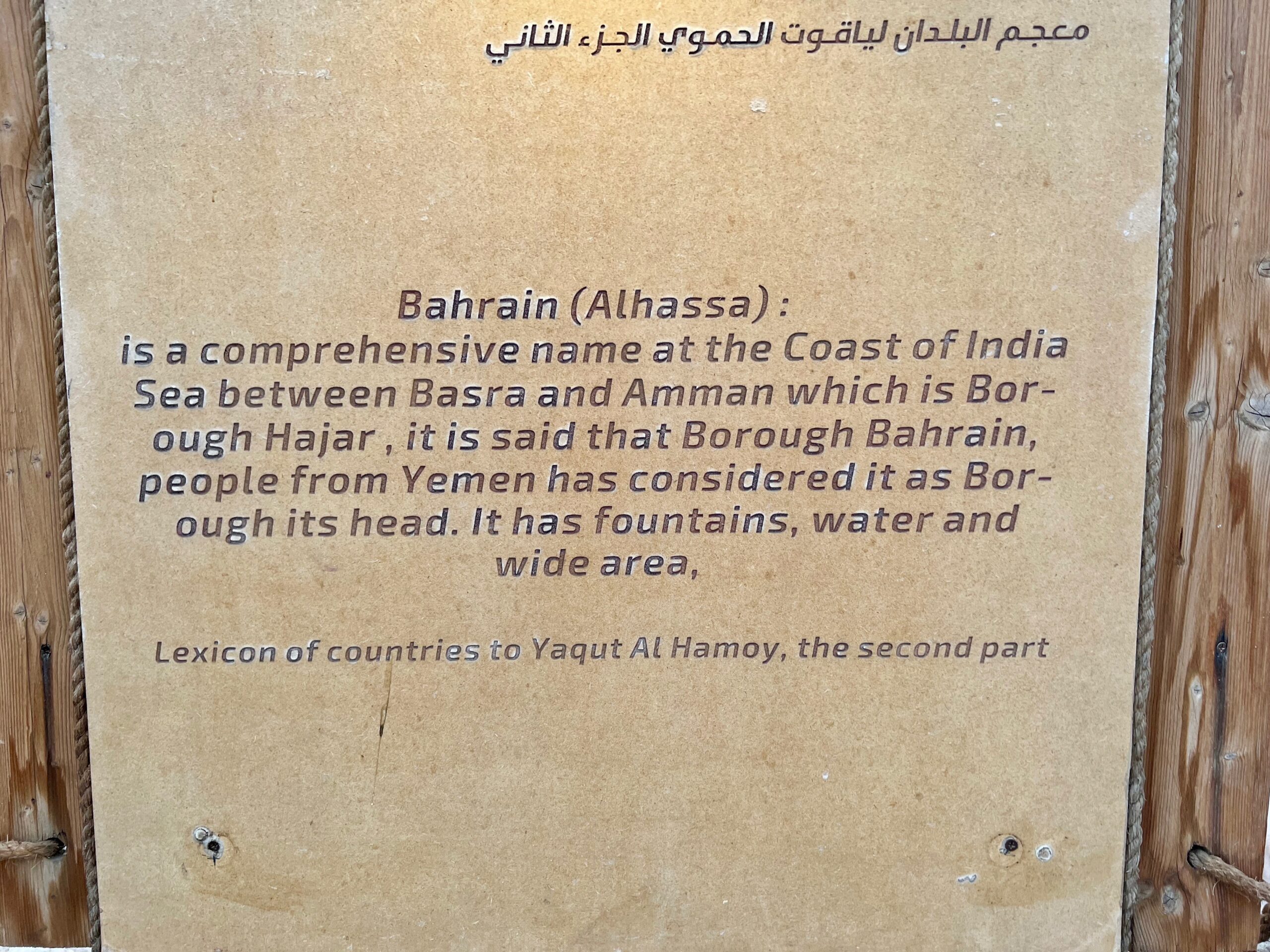
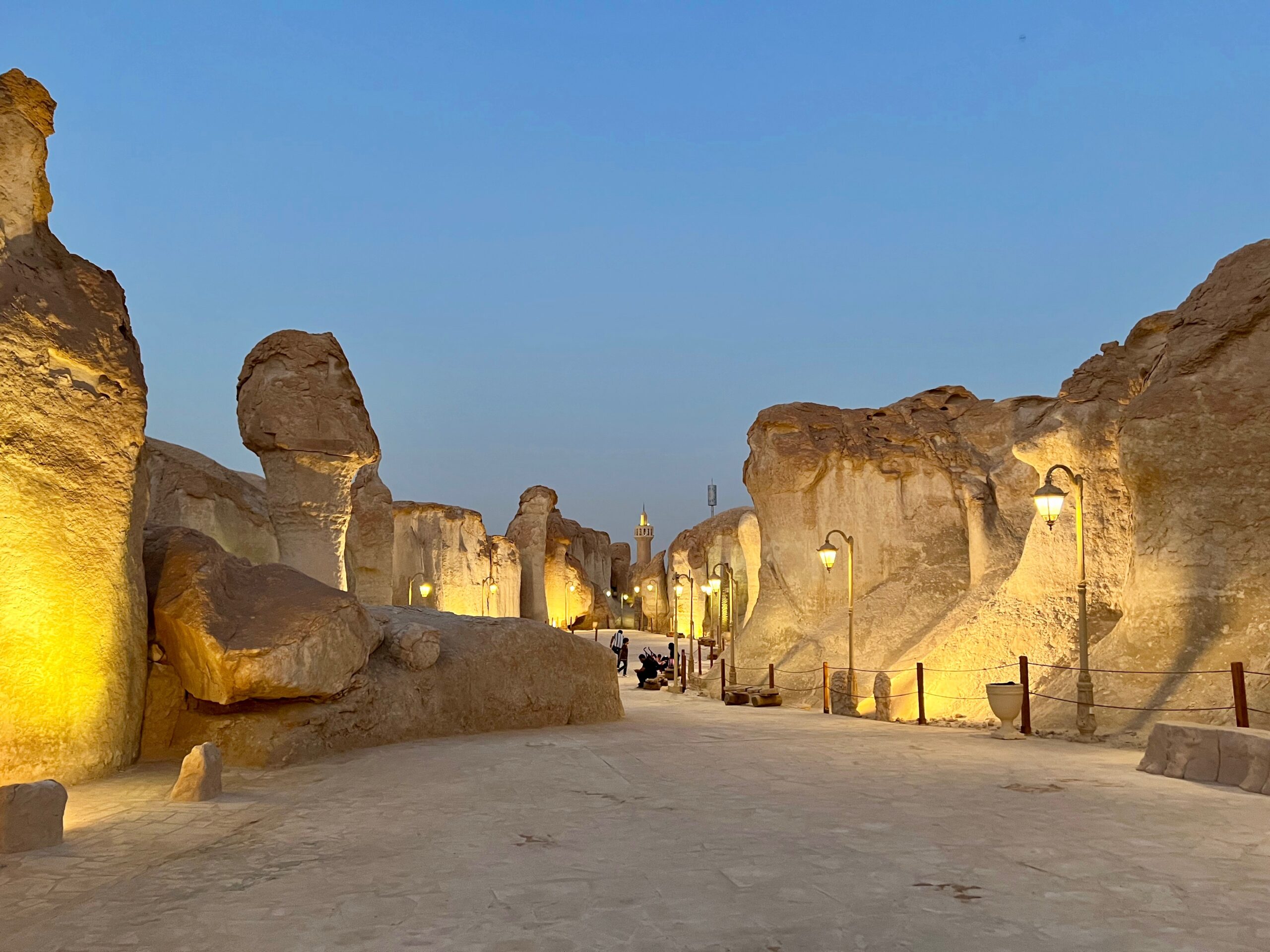
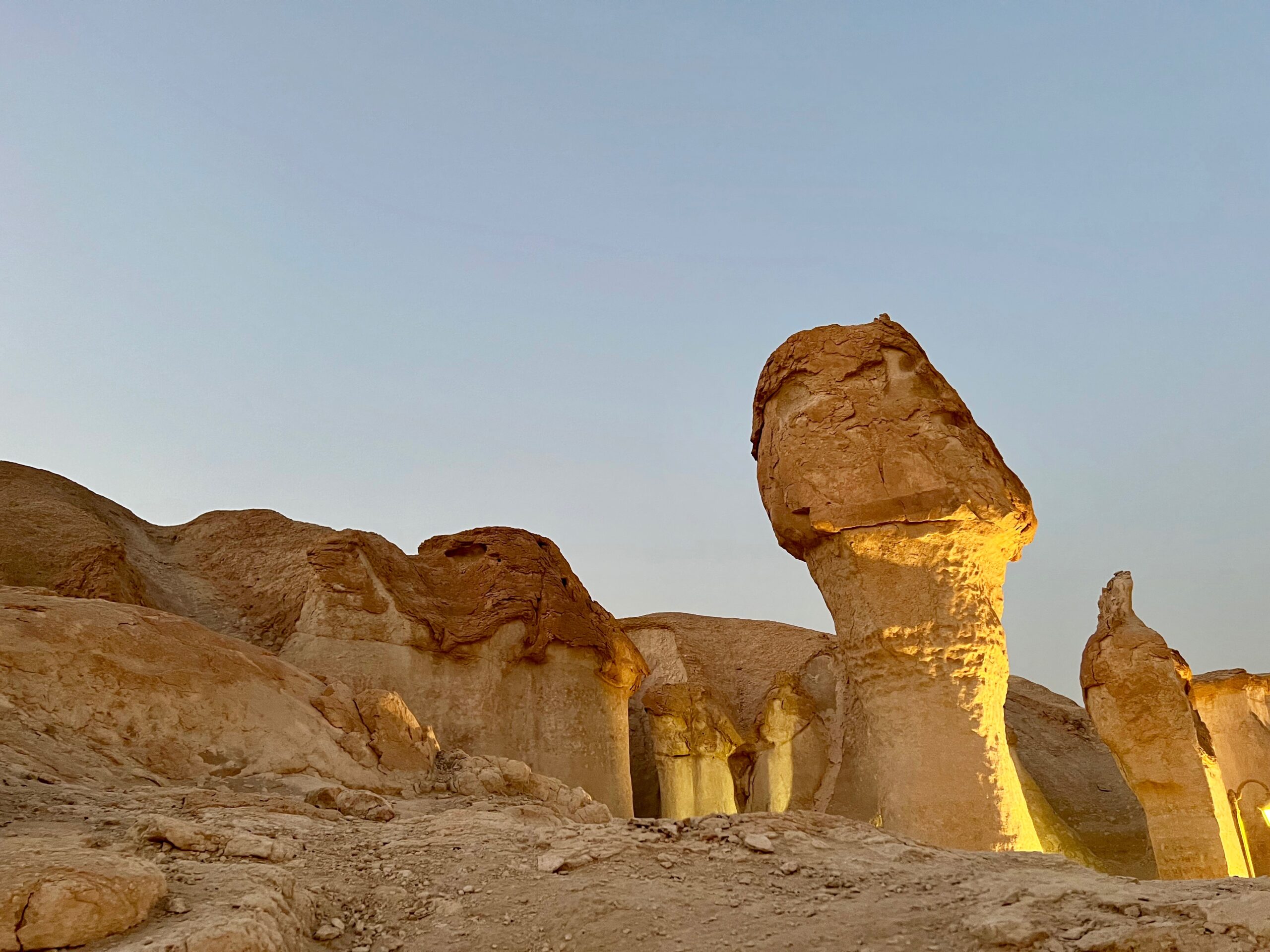

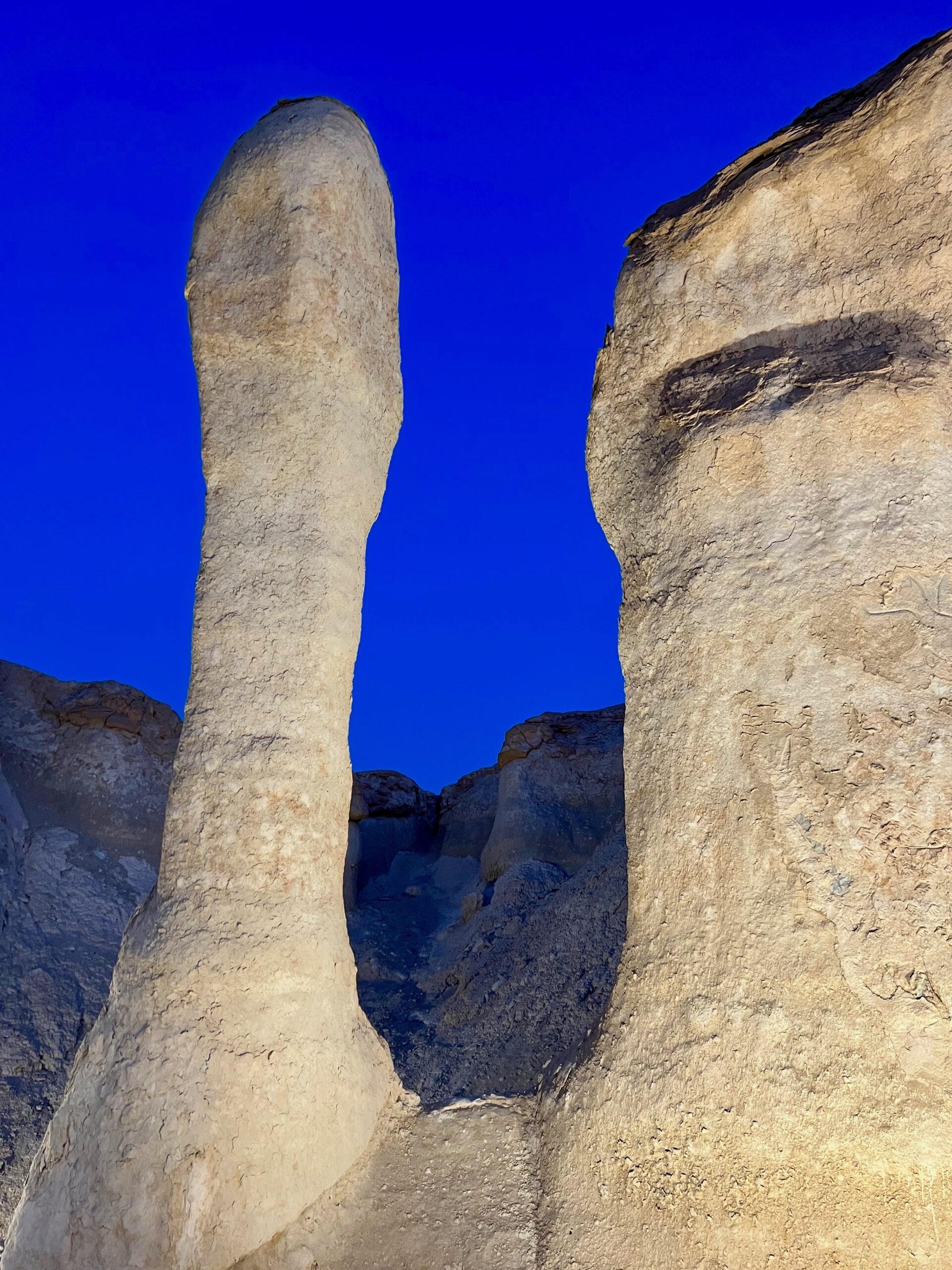
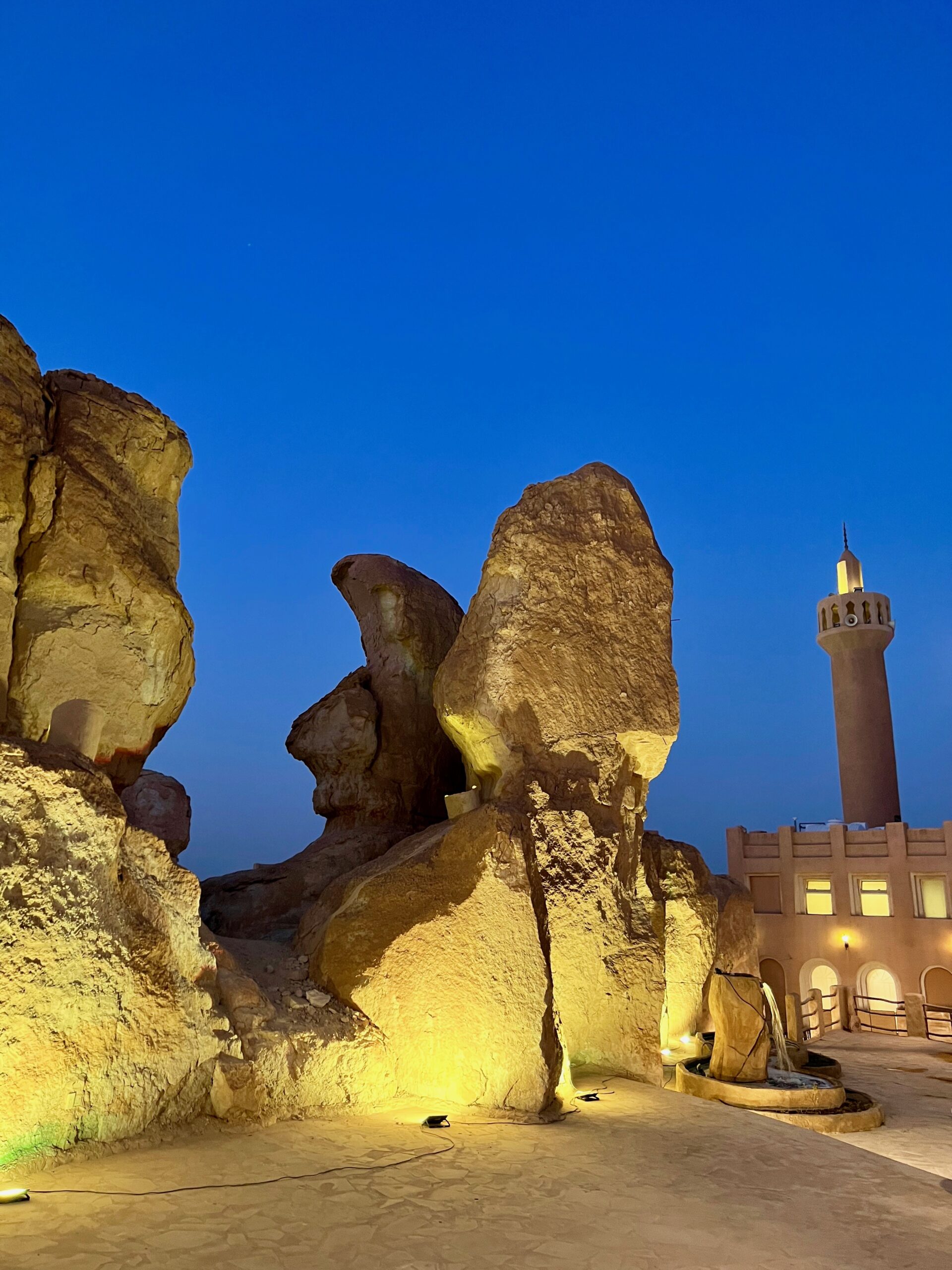
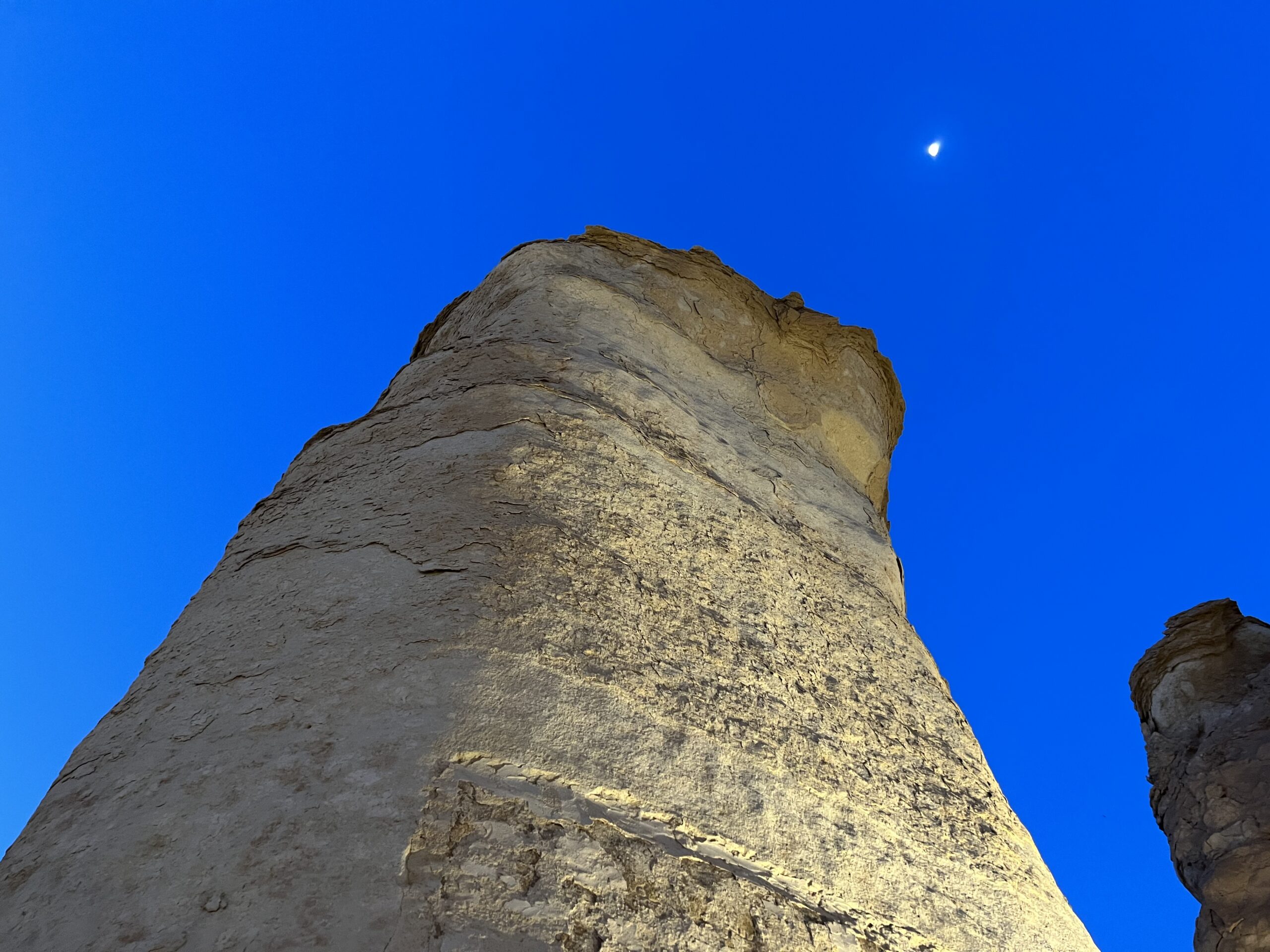
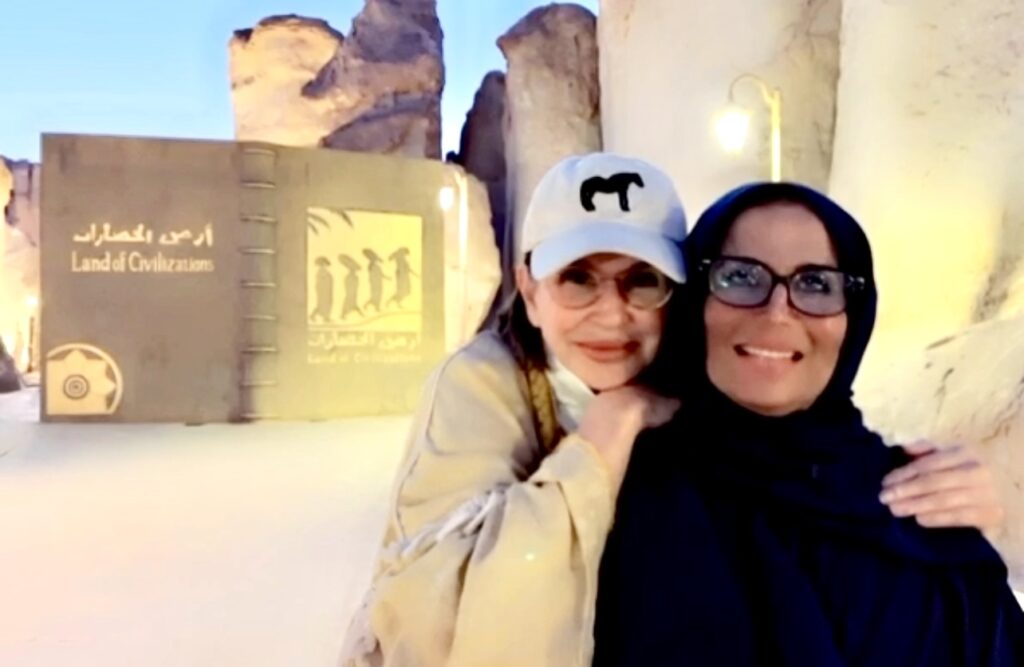
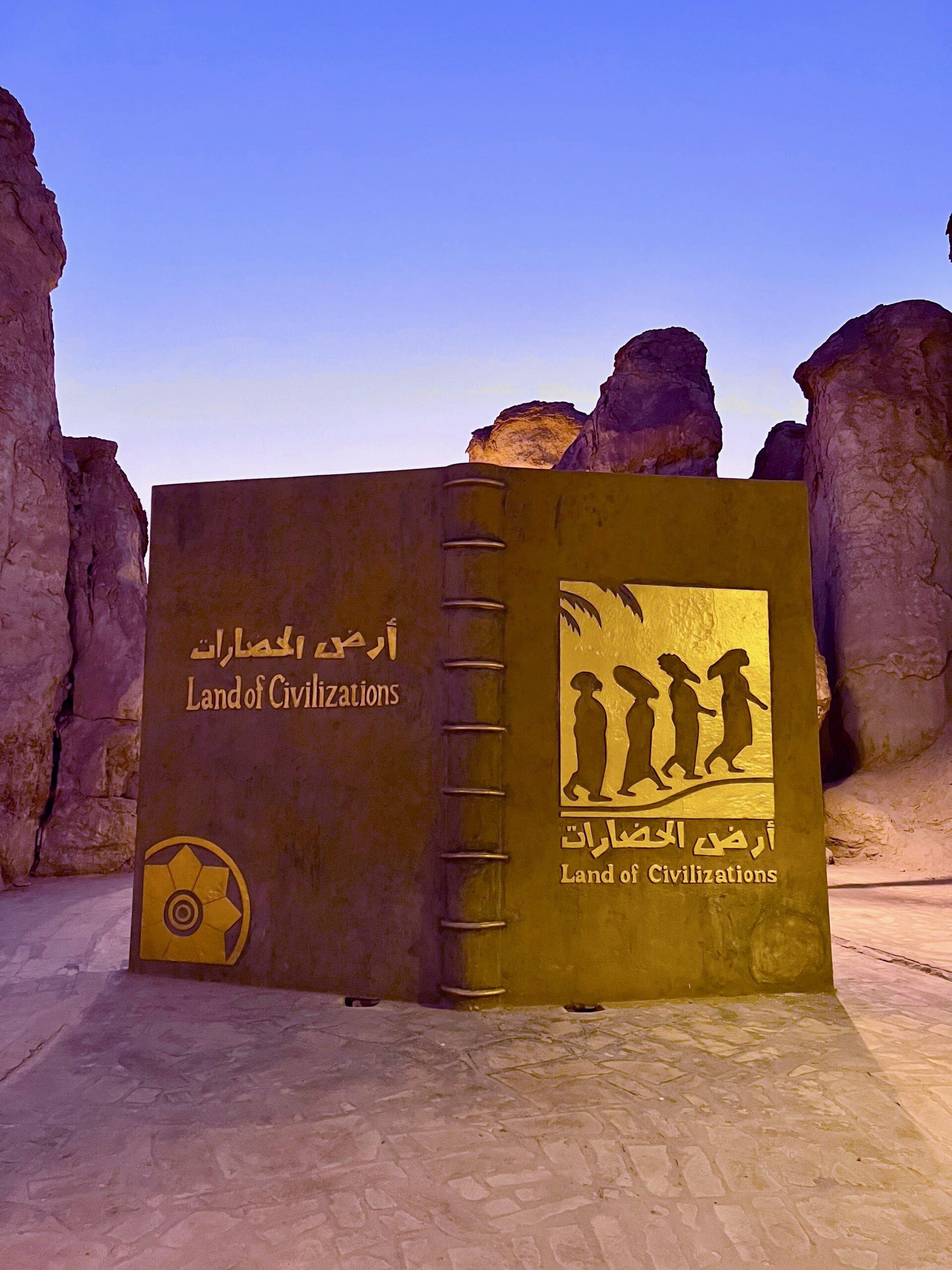
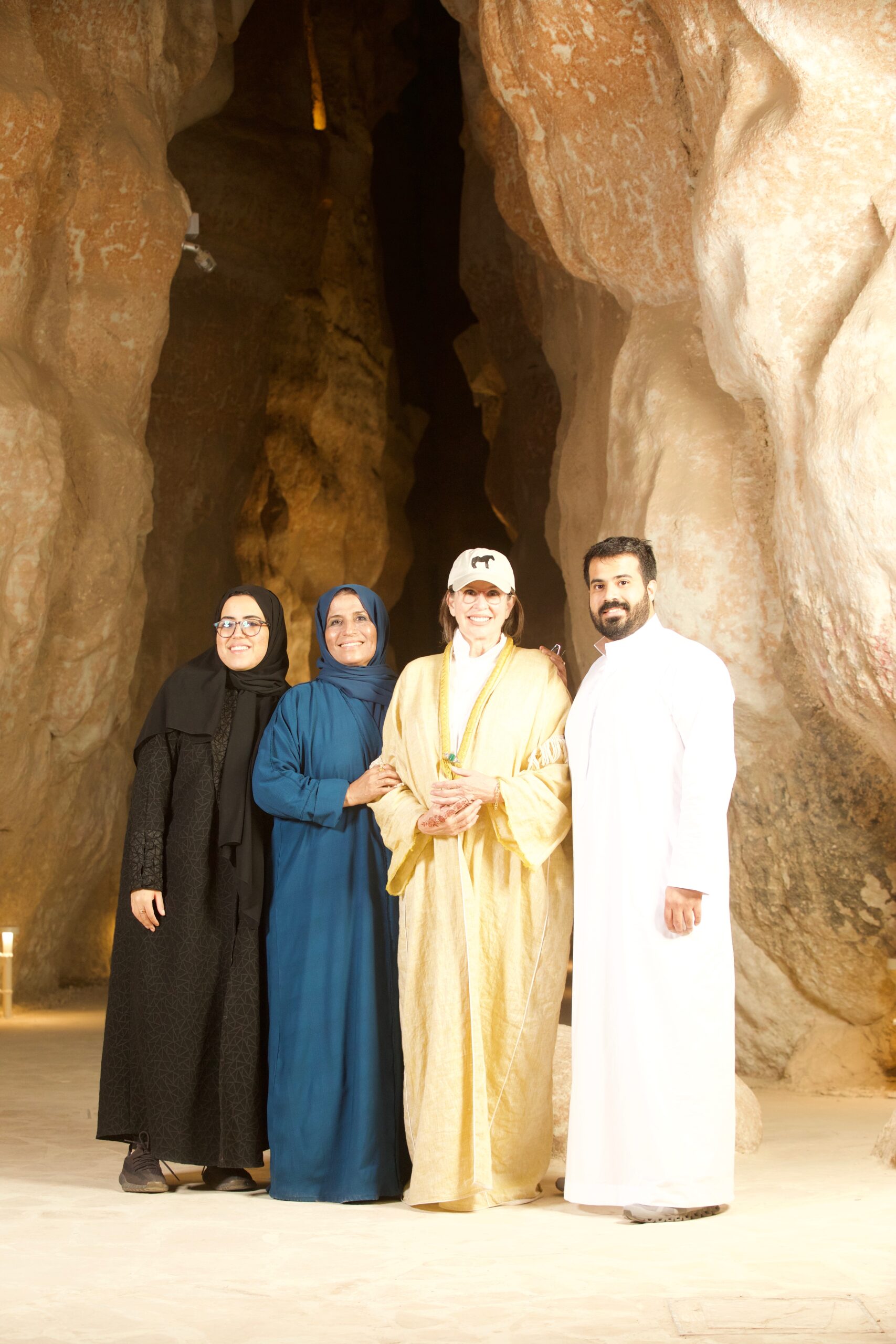
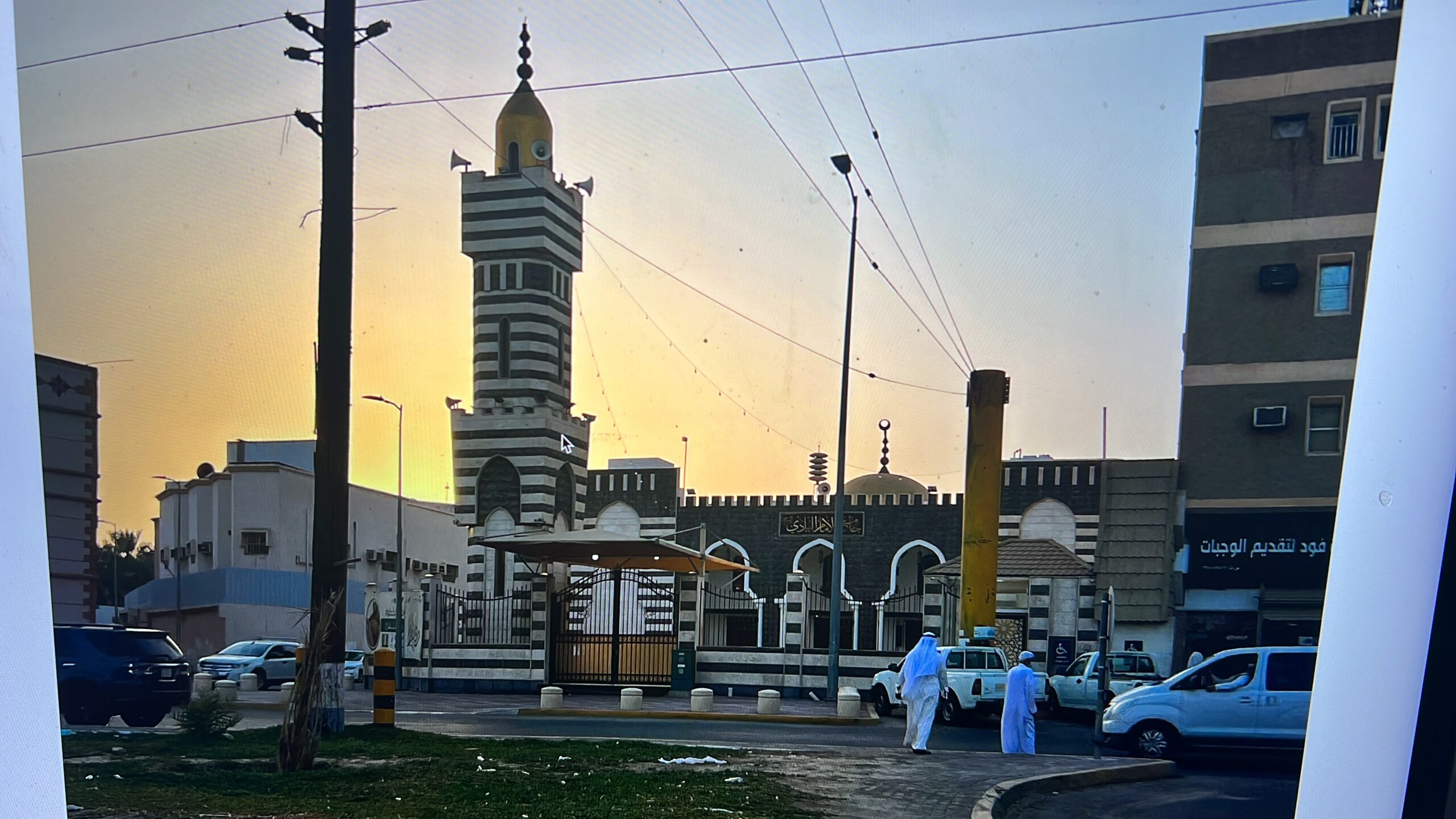
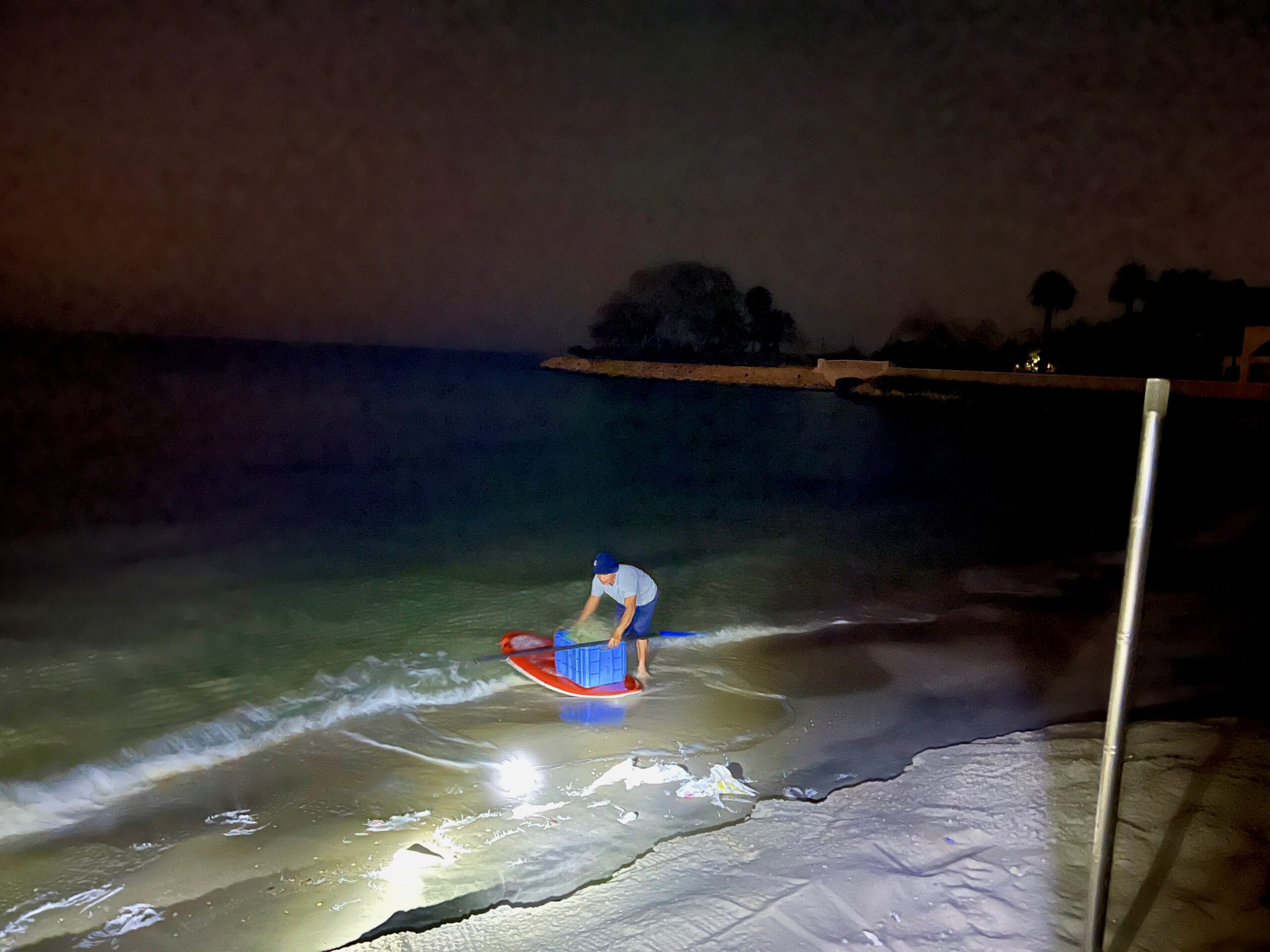
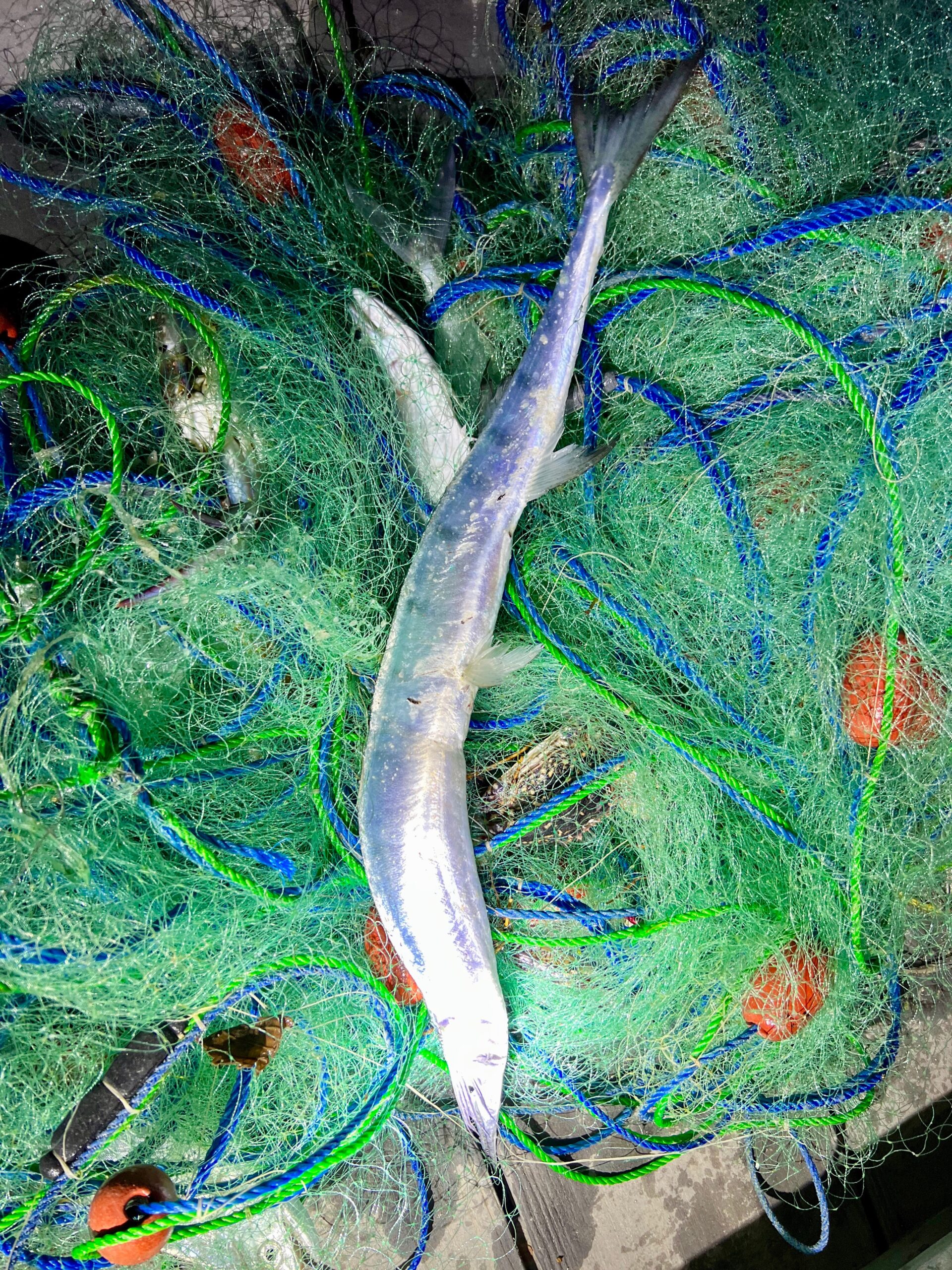
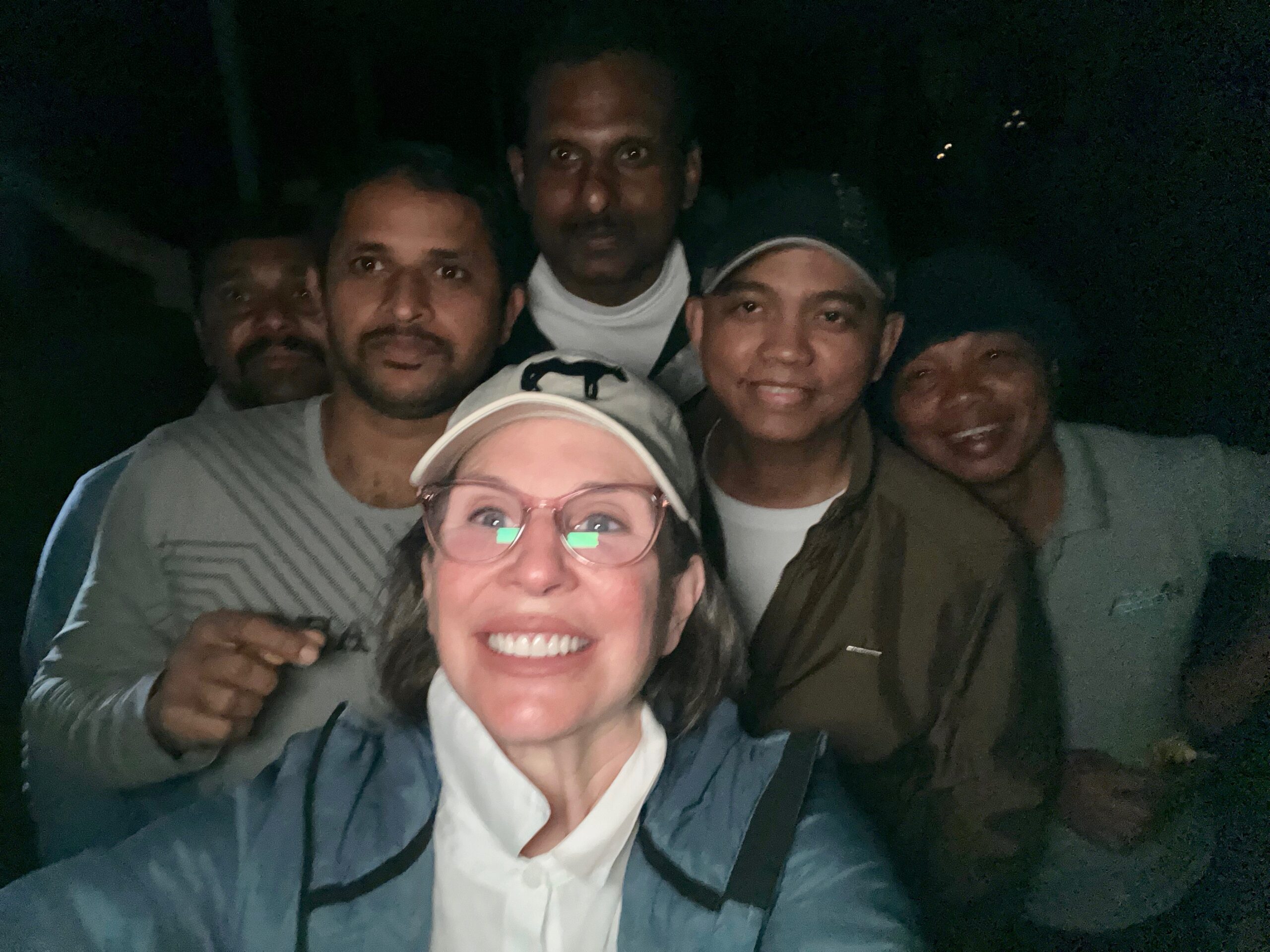
Good night Al Aziziya.

